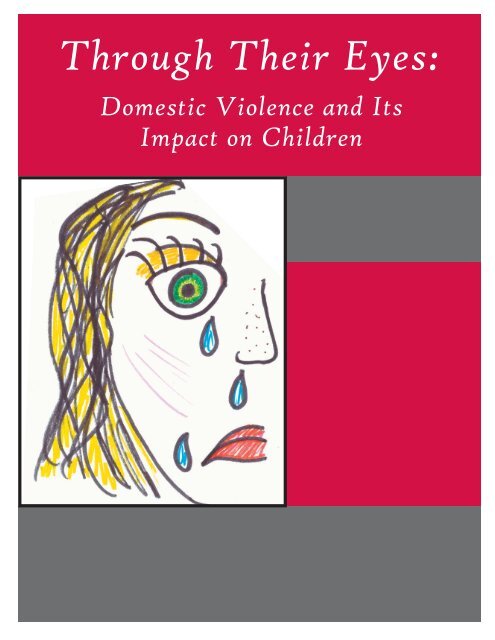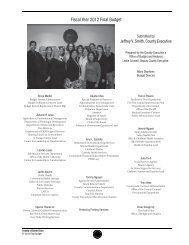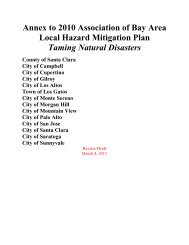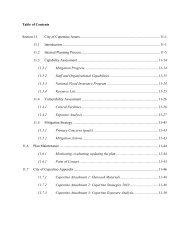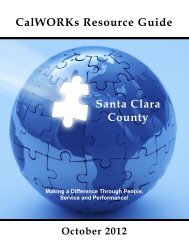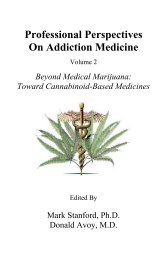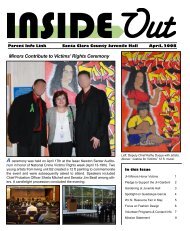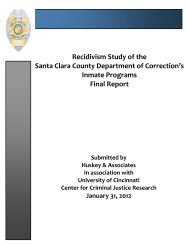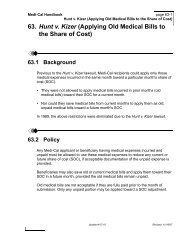Through Their Eyes: Domestic Violence and It's Impact on Children
Through Their Eyes: Domestic Violence and It's Impact on Children
Through Their Eyes: Domestic Violence and It's Impact on Children
Create successful ePaper yourself
Turn your PDF publications into a flip-book with our unique Google optimized e-Paper software.
<str<strong>on</strong>g>Through</str<strong>on</strong>g> <str<strong>on</strong>g>Their</str<strong>on</strong>g> <str<strong>on</strong>g>Eyes</str<strong>on</strong>g>:<br />
<str<strong>on</strong>g>Domestic</str<strong>on</strong>g> <str<strong>on</strong>g>Violence</str<strong>on</strong>g> <str<strong>on</strong>g>and</str<strong>on</strong>g> Its<br />
<str<strong>on</strong>g>Impact</str<strong>on</strong>g> <strong>on</strong> <strong>Children</strong><br />
A Project of:
<str<strong>on</strong>g>Through</str<strong>on</strong>g> <str<strong>on</strong>g>Their</str<strong>on</strong>g> <str<strong>on</strong>g>Eyes</str<strong>on</strong>g><br />
Moving Women <str<strong>on</strong>g>and</str<strong>on</strong>g> Families Forward<br />
www.ywcaworks.org<br />
Introducti<strong>on</strong><br />
<str<strong>on</strong>g>Domestic</str<strong>on</strong>g> violence shatters the lives<br />
of its victims <str<strong>on</strong>g>and</str<strong>on</strong>g> diminishes the<br />
quality of life for every<strong>on</strong>e in the<br />
community. It is the leading cause of<br />
homelessness for women <str<strong>on</strong>g>and</str<strong>on</strong>g> families.<br />
It also can be incredibly traumatic for<br />
children who witness it.<br />
The YWCA of Seattle • King County<br />
• Snohomish County is committed to<br />
providing women of all ages with the<br />
practical tools, support, <str<strong>on</strong>g>and</str<strong>on</strong>g> educati<strong>on</strong><br />
they need to create safe, productive<br />
lives. Our Teen Peer Advocates work<br />
with young women in area high<br />
schools to help them avoid unhealthy<br />
relati<strong>on</strong>ships that lead to dating <str<strong>on</strong>g>and</str<strong>on</strong>g><br />
family violence. Our advocacy-based<br />
counseling <str<strong>on</strong>g>and</str<strong>on</strong>g> transiti<strong>on</strong>al housing<br />
services help women who have<br />
experienced domestic violence rebuild<br />
their lives. Our <strong>Children</strong>’s <str<strong>on</strong>g>Domestic</str<strong>on</strong>g><br />
<str<strong>on</strong>g>Violence</str<strong>on</strong>g> Program uses specifically<br />
designed activities to help children<br />
underst<str<strong>on</strong>g>and</str<strong>on</strong>g> <str<strong>on</strong>g>and</str<strong>on</strong>g> heal from the effects<br />
of witnessing domestic violence.<br />
<str<strong>on</strong>g>Through</str<strong>on</strong>g> <str<strong>on</strong>g>Their</str<strong>on</strong>g> <str<strong>on</strong>g>Eyes</str<strong>on</strong>g> tells their stories—<br />
through their artwork <str<strong>on</strong>g>and</str<strong>on</strong>g> in their<br />
words. Participants in our children’s<br />
program are sharing their experiences<br />
to help all of us underst<str<strong>on</strong>g>and</str<strong>on</strong>g> how<br />
domestic violence has affected their<br />
lives. Experts in our community build<br />
<strong>on</strong> these powerful stories to help<br />
us learn more about the effects of<br />
domestic violence <strong>on</strong> children <str<strong>on</strong>g>and</str<strong>on</strong>g><br />
how we can help.<br />
Eradicating domestic violence requires<br />
a community effort. We urge readers<br />
of this book to learn more about<br />
domestic violence <str<strong>on</strong>g>and</str<strong>on</strong>g> to join the<br />
YWCA in our efforts to create a<br />
community where every pers<strong>on</strong> can<br />
live in dignity, free from violence.<br />
Sue Sherbrooke<br />
YWCA CEO
Chapter 1 | <str<strong>on</strong>g>Through</str<strong>on</strong>g> <str<strong>on</strong>g>Their</str<strong>on</strong>g> <str<strong>on</strong>g>Eyes</str<strong>on</strong>g><br />
• <str<strong>on</strong>g>Domestic</str<strong>on</strong>g> violence is<br />
the single greatest<br />
cause of injury to<br />
women between<br />
the ages of 15 <str<strong>on</strong>g>and</str<strong>on</strong>g><br />
44. 1<br />
• Each year in the<br />
U.S., medical<br />
expenses from<br />
domestic violence<br />
total at least 3 to 5<br />
billi<strong>on</strong> dollars. 2<br />
• Washingt<strong>on</strong> State<br />
domestic violence<br />
programs served<br />
25,031 adults<br />
<str<strong>on</strong>g>and</str<strong>on</strong>g> children in<br />
2001. 3<br />
2
The <str<strong>on</strong>g>Impact</str<strong>on</strong>g> of<br />
<str<strong>on</strong>g>Domestic</str<strong>on</strong>g> <str<strong>on</strong>g>Violence</str<strong>on</strong>g><br />
• Because of space<br />
<str<strong>on</strong>g>and</str<strong>on</strong>g> funding<br />
restricti<strong>on</strong>s,<br />
Washingt<strong>on</strong> State<br />
domestic violence<br />
programs had to<br />
refuse 32,967<br />
requests for shelter<br />
in 2001. 4<br />
• Intimate partner<br />
violence accounted<br />
for 22 percent of<br />
the violent crimes<br />
against women in<br />
2000, compared<br />
to 3 percent of<br />
the crimes against<br />
men. 5<br />
After dinner, Anita cleans the kitchen<br />
thoroughly, but it isn’t clean enough<br />
for Mike. He becomes enraged <str<strong>on</strong>g>and</str<strong>on</strong>g><br />
verbally abusive, eventually hitting her<br />
so hard that he breaks her arm.<br />
Mari<strong>on</strong> <str<strong>on</strong>g>and</str<strong>on</strong>g> Larry split up a year ago,<br />
<str<strong>on</strong>g>and</str<strong>on</strong>g> are still struggling with a messy<br />
divorce. On weekend nights, Larry<br />
stalks Mari<strong>on</strong> by car, following her<br />
every move <str<strong>on</strong>g>and</str<strong>on</strong>g> threatening to kill her<br />
if he ever finds her with another man.<br />
Ziba communicates with a girlfriend<br />
via instant messenger. Sean goes <strong>on</strong><br />
the computer <str<strong>on</strong>g>and</str<strong>on</strong>g> tracks her history.<br />
He accuses her of having an affair,<br />
calls her stupid, <str<strong>on</strong>g>and</str<strong>on</strong>g> then throws a<br />
heavy chair through the window in<br />
the kitchen.<br />
These situati<strong>on</strong>s aren’t imaginary.<br />
They happen in homes around us all<br />
the time. <str<strong>on</strong>g>Domestic</str<strong>on</strong>g> violence is an<br />
enormous social problem that persists<br />
in the U.S. in the 21st century.<br />
Though it goes by other names such<br />
as spousal abuse, family violence,<br />
intimate partner violence, the<br />
ultimate aim of all forms of domestic<br />
violence is the same. It is a pattern<br />
of behaviors used by <strong>on</strong>e pers<strong>on</strong> in a<br />
relati<strong>on</strong>ship to coercively c<strong>on</strong>trol the<br />
other.<br />
Perpetrators of domestic violence<br />
believe they are entitled to c<strong>on</strong>trol<br />
their family members. <str<strong>on</strong>g>Domestic</str<strong>on</strong>g><br />
violence is not caused by frustrati<strong>on</strong>,<br />
stress, alcohol/addicti<strong>on</strong>, or poverty. It<br />
is not an issue of anger, though often<br />
it can appear that way. Instead, it is a<br />
set of behaviors designed to maintain<br />
dominance over <strong>on</strong>e’s intimate<br />
partner.<br />
<str<strong>on</strong>g>Domestic</str<strong>on</strong>g> violence can take many<br />
different forms, some of them very<br />
subtle. Examples of domestic violence<br />
include: name-calling or putdowns,<br />
isolati<strong>on</strong> from friends, family, <str<strong>on</strong>g>and</str<strong>on</strong>g><br />
the community, withholding m<strong>on</strong>ey,<br />
actual or threatened physical<br />
harm, sexual assault, stalking, <str<strong>on</strong>g>and</str<strong>on</strong>g><br />
intimidati<strong>on</strong>. The behaviors comm<strong>on</strong>ly<br />
escalate over time. <str<strong>on</strong>g>Domestic</str<strong>on</strong>g> violence<br />
can be practiced in plain view of the<br />
public eye, but more often, it is kept<br />
in the c<strong>on</strong>fines of a home. It is often<br />
hidden by both the perpetrator <str<strong>on</strong>g>and</str<strong>on</strong>g> the<br />
victim to avoid any legal or pers<strong>on</strong>al<br />
c<strong>on</strong>sequences.<br />
Studies show that domestic violence<br />
happens am<strong>on</strong>g all cultures <str<strong>on</strong>g>and</str<strong>on</strong>g><br />
classes. Though violent behavior in<br />
general is often linked to ec<strong>on</strong>omics,<br />
domestic violence occurs in<br />
ec<strong>on</strong>omically advantaged families as<br />
well as low-income families, <str<strong>on</strong>g>and</str<strong>on</strong>g> it<br />
cuts across all races <str<strong>on</strong>g>and</str<strong>on</strong>g> ethnicities.<br />
<str<strong>on</strong>g>Domestic</str<strong>on</strong>g> violence also occurs in<br />
a variety of intimate relati<strong>on</strong>ships.<br />
Partners may be married or not<br />
married, heterosexual, gay, or lesbian,<br />
living together, separated, divorced, or<br />
dating.<br />
When we talk about domestic<br />
violence as a social issue, however,<br />
we recognize that the vast majority<br />
of domestic violence happens in<br />
heterosexual relati<strong>on</strong>ships where<br />
the abuser is male <str<strong>on</strong>g>and</str<strong>on</strong>g> the victim is<br />
female. Thus, for the purpose of this<br />
book, we refer to abusers as men <str<strong>on</strong>g>and</str<strong>on</strong>g><br />
3
Chapter 1<br />
victims as women <str<strong>on</strong>g>and</str<strong>on</strong>g> we will also be<br />
looking primarily at relati<strong>on</strong>ships that<br />
involve children.<br />
<str<strong>on</strong>g>Domestic</str<strong>on</strong>g> violence creates a culture of<br />
fear <str<strong>on</strong>g>and</str<strong>on</strong>g> intimidati<strong>on</strong> that can affect<br />
every member of a family. In his<br />
quest for c<strong>on</strong>trol, the abuser forces<br />
every<strong>on</strong>e within the range of his<br />
authority to resp<strong>on</strong>d to his behavior.<br />
This often includes any children who<br />
are in the home.<br />
<strong>Children</strong> were present in all of the<br />
stories from the beginning of this<br />
chapter. Anita’s three daughters,<br />
ages 6, 8, <str<strong>on</strong>g>and</str<strong>on</strong>g> 10, were in the room<br />
watching when Mike broke her arm.<br />
Mari<strong>on</strong>’s two children, ages 5 <str<strong>on</strong>g>and</str<strong>on</strong>g> 7,<br />
rode in the backseat of the car when<br />
Larry stalked her; he told them he<br />
was going to kill her. Ziba’s daughter<br />
Marjan was in the living room with her<br />
friends, celebrating her 12th birthday<br />
when Sean exploded. All of these<br />
children were exposed to domestic<br />
violence in real <str<strong>on</strong>g>and</str<strong>on</strong>g> disturbing ways.<br />
Studies have shown that there is<br />
significant overlap between domestic<br />
violence <str<strong>on</strong>g>and</str<strong>on</strong>g> child abuse—homes<br />
where <strong>on</strong>e is present are likely to<br />
have the other. The majority of<br />
• Physical violence<br />
against women by<br />
intimates is often<br />
accompanied by<br />
emoti<strong>on</strong>ally abusive<br />
<str<strong>on</strong>g>and</str<strong>on</strong>g> c<strong>on</strong>trolling<br />
behavior. Surveys<br />
have found that<br />
women whose<br />
partners were<br />
jealous, c<strong>on</strong>trolling,<br />
or verbally abusive<br />
were significantly<br />
more likely to<br />
report being raped,<br />
physically assaulted<br />
<str<strong>on</strong>g>and</str<strong>on</strong>g>/or stalked<br />
by their partners.<br />
This supports the<br />
theory that violence<br />
4
<str<strong>on</strong>g>Through</str<strong>on</strong>g> <str<strong>on</strong>g>Their</str<strong>on</strong>g> <str<strong>on</strong>g>Eyes</str<strong>on</strong>g><br />
is often part of a<br />
systematic pattern<br />
of dominance <str<strong>on</strong>g>and</str<strong>on</strong>g><br />
c<strong>on</strong>trol. 6<br />
• At least 119<br />
women were<br />
murdered in<br />
Washingt<strong>on</strong> State<br />
by their current<br />
or former partner<br />
between 1997 <str<strong>on</strong>g>and</str<strong>on</strong>g><br />
2001. 7<br />
• In that same time<br />
span, abusers killed<br />
at least 17 children<br />
in the c<strong>on</strong>text of<br />
violence toward<br />
their partner. 8<br />
studies have found that from 30 to<br />
60 percent of families where child<br />
maltreatment or woman battering is<br />
identified, it is likely that both forms<br />
of abuse exist. 9<br />
But it is also clear that children can be<br />
affected just by witnessing domestic<br />
violence in their home. <strong>Children</strong> who<br />
witness violence can suffer a range of<br />
physical <str<strong>on</strong>g>and</str<strong>on</strong>g>/or emoti<strong>on</strong>al harms, even<br />
if they themselves have never been<br />
physically abused. For the remainder<br />
of this book, we will be looking at<br />
children who have witnessed domestic<br />
violence <strong>on</strong>ly. However, we will also<br />
argue that witnessing violence may in<br />
itself be harmful to children. It is part<br />
of the system of c<strong>on</strong>trol perpetrated<br />
by the abuser.<br />
“Each child has a unique set of<br />
experiences, <str<strong>on</strong>g>and</str<strong>on</strong>g> each is impacted<br />
in a unique way,” says Dr. Jeffrey<br />
Edles<strong>on</strong>, Director of the Minnesota<br />
Center Against <str<strong>on</strong>g>Violence</str<strong>on</strong>g> <str<strong>on</strong>g>and</str<strong>on</strong>g> Abuse.<br />
“Lots of kids come out fairly intact<br />
<str<strong>on</strong>g>and</str<strong>on</strong>g> healthy. Others may experience<br />
the same violence exposure, but<br />
end up devastated. One of the<br />
main tasks of early childhood is<br />
to develop secure attachments.<br />
<str<strong>on</strong>g>Domestic</str<strong>on</strong>g> violence disrupts<br />
that process. It also disrupts<br />
self-regulati<strong>on</strong> <str<strong>on</strong>g>and</str<strong>on</strong>g> deep<br />
relati<strong>on</strong>ships. For some children,<br />
the danger is being involved <str<strong>on</strong>g>and</str<strong>on</strong>g><br />
being injured <str<strong>on</strong>g>and</str<strong>on</strong>g> seeing your<br />
mother injured. For some children,<br />
the domestic violence exposure<br />
may not be the <strong>on</strong>ly risk in the child’s<br />
life.”<br />
Witnessing violence in the home can<br />
disrupt a child’s normal relati<strong>on</strong>ships<br />
to her or his parents. <strong>Children</strong> can<br />
be c<strong>on</strong>fused <str<strong>on</strong>g>and</str<strong>on</strong>g> frustrated by the<br />
abuser’s behavior. They can feel<br />
powerless <str<strong>on</strong>g>and</str<strong>on</strong>g> angry at not being able<br />
to stop the incidents, <str<strong>on</strong>g>and</str<strong>on</strong>g> they are<br />
often c<strong>on</strong>sumed by fear. They also<br />
can develop a warped c<strong>on</strong>cept of<br />
power <str<strong>on</strong>g>and</str<strong>on</strong>g> c<strong>on</strong>trol. They may feel that<br />
they have the power to c<strong>on</strong>trol the<br />
batterer’s behaviors <str<strong>on</strong>g>and</str<strong>on</strong>g> they often<br />
blame themselves or see themselves<br />
as the reas<strong>on</strong> he became angry.<br />
C<strong>on</strong>versely, they can start thinking<br />
that other people c<strong>on</strong>trol how they<br />
behave. During a supervised play<br />
therapy sessi<strong>on</strong>, <strong>on</strong>e 5-year-old child<br />
proclaimed that if his little brother<br />
wouldn’t have grabbed his truck, he<br />
wouldn’t have had to hit him with it.<br />
Additi<strong>on</strong>ally, adults perpetuate a<br />
culture of silence by minimizing or<br />
5
Chapter 1<br />
refusing to talk about the abuse.<br />
Mothers may try to protect their<br />
children from the trauma of the<br />
violence by denying that anything<br />
bad has happened or minimizing the<br />
severity. This sends the message that<br />
children cannot or should not talk<br />
about what they<br />
have<br />
seen or heard.<br />
It may also change their view of the<br />
situati<strong>on</strong>, <str<strong>on</strong>g>and</str<strong>on</strong>g> lead to c<strong>on</strong>fusi<strong>on</strong>.<br />
Without an outlet to discuss the<br />
incident(s), children may draw their<br />
own c<strong>on</strong>clusi<strong>on</strong>s, which can often<br />
include self-blame or blame of the<br />
mother. Sadly, this is exactly what<br />
mothers are trying to avoid in the<br />
first place, <str<strong>on</strong>g>and</str<strong>on</strong>g> it fits neatly into the<br />
batterer’s agenda.<br />
Parents often think their children<br />
do not know that the violence is<br />
occurring. But children are almost<br />
always aware of abusive behavior that<br />
is happening in the home. They come<br />
in c<strong>on</strong>tact with it through a variety of<br />
ways, both directly <str<strong>on</strong>g>and</str<strong>on</strong>g> indirectly.<br />
They always notice the<br />
tensi<strong>on</strong> that is present in<br />
their home —a “walking<br />
<strong>on</strong> eggshells” feeling.<br />
They worry, they<br />
try to please, <str<strong>on</strong>g>and</str<strong>on</strong>g><br />
they often try to<br />
“fix” the problem<br />
in order to avoid<br />
a blow-up. If<br />
there is more<br />
than <strong>on</strong>e child,<br />
children may talk<br />
about it am<strong>on</strong>g<br />
themselves. The<br />
media often shows<br />
us the image of a<br />
younger child crawling<br />
into bed to seek<br />
comfort <str<strong>on</strong>g>and</str<strong>on</strong>g> reassurance<br />
from an older child.<br />
When an incident happens,<br />
children are often visual witnesses.<br />
They may see slapping, punching,<br />
hitting, or other physical abuse<br />
toward their mother, or they may<br />
witness loud arguments <str<strong>on</strong>g>and</str<strong>on</strong>g> explosive<br />
outbursts directed at inanimate<br />
objects. In some instances, children<br />
try to intervene, often to protect their<br />
mother, <str<strong>on</strong>g>and</str<strong>on</strong>g> are injured in the process.<br />
The Minnesota<br />
Center Against<br />
<str<strong>on</strong>g>Violence</str<strong>on</strong>g> <str<strong>on</strong>g>and</str<strong>on</strong>g> Abuse’s<br />
“Child Involvement<br />
Survey” looked at<br />
how children became<br />
involved in domestic<br />
violence incidents in<br />
the home, even when<br />
they are not direct<br />
victims of violence.<br />
The results showed<br />
overwhelming<br />
evidence that<br />
domestic violence<br />
does not c<strong>on</strong>fine<br />
itself to the partner<br />
relati<strong>on</strong>ship.<br />
6
<str<strong>on</strong>g>Through</str<strong>on</strong>g> <str<strong>on</strong>g>Their</str<strong>on</strong>g> <str<strong>on</strong>g>Eyes</str<strong>on</strong>g><br />
• 44 percent of<br />
parents reported<br />
that their children<br />
watched an entire<br />
violent incident<br />
• 83 percent of<br />
children overheard<br />
abuse from another<br />
room<br />
• Over 1/2 of children<br />
were threatened<br />
with physical harm<br />
• Over 1/3 of children<br />
were accidentally<br />
injured<br />
• Over 1/4 were hurt<br />
intenti<strong>on</strong>ally by the<br />
abuser when they<br />
tried to intervene 10<br />
A variant of this is that children<br />
overhear violence happening in<br />
another room. Sergeant Deborah<br />
Nichols<strong>on</strong> of the Seattle Police<br />
Department’s <str<strong>on</strong>g>Domestic</str<strong>on</strong>g> <str<strong>on</strong>g>Violence</str<strong>on</strong>g> Unit<br />
notes that children are often the <strong>on</strong>es<br />
who call 911 when violence happens,<br />
either with or without their parents’<br />
approval. In the drawing <strong>on</strong> page 6, a<br />
young girl huddles under her blankets<br />
in her bedroom, listening to her father<br />
abuse her mother <str<strong>on</strong>g>and</str<strong>on</strong>g> praying for it to<br />
stop.<br />
<strong>Children</strong> also see the aftermath of<br />
violence in their homes—broken<br />
furniture <str<strong>on</strong>g>and</str<strong>on</strong>g> windows, injuries <str<strong>on</strong>g>and</str<strong>on</strong>g><br />
emoti<strong>on</strong>al disturbances in themselves<br />
<str<strong>on</strong>g>and</str<strong>on</strong>g> in their mother. Anita’s 6-year-old<br />
daughter began crying when a favorite<br />
toy was found <strong>on</strong> the floor, broken,<br />
after a violent episode.<br />
<strong>Children</strong> can also become involved<br />
when they are used as a tool by the<br />
perpetrator of the abuse. This can be<br />
either physical or emoti<strong>on</strong>al. In the<br />
stalking scenario, Larry knew that<br />
his children would report back to<br />
their mother about his behavior, thus<br />
making her frightened for herself <str<strong>on</strong>g>and</str<strong>on</strong>g><br />
the safety of her children. Another<br />
child was told by her father that she<br />
would receive <strong>on</strong>e dollar for every<br />
time she made her mother cry.<br />
In Ziba’s story, Ziba’s husb<str<strong>on</strong>g>and</str<strong>on</strong>g> chose<br />
to yell <str<strong>on</strong>g>and</str<strong>on</strong>g> throw things at Ziba during<br />
Marjan’s birthday party. The police<br />
arrived, <str<strong>on</strong>g>and</str<strong>on</strong>g> the incident ended with<br />
Marjan’s father being arrested. Once<br />
she stopped worrying about her<br />
mother’s safety, Marjan was mortally<br />
embarrassed by her father’s behavior.<br />
She worried that her friends, who<br />
witnessed the incident, would stop<br />
liking her. When their parents found<br />
out about the incident, friends were<br />
not allowed to come to her house,<br />
which was exactly what the batterer<br />
wanted in the first place. He did not<br />
c<strong>on</strong>sider Marjan’s feelings or social<br />
status at all—he was frustrated by not<br />
being in c<strong>on</strong>trol of his house.<br />
Obviously, not all batterers or<br />
incidents are so straightforward or<br />
manipulative, but battering behaviors<br />
are always a choice <str<strong>on</strong>g>and</str<strong>on</strong>g> are most<br />
often d<strong>on</strong>e so that the batterer can<br />
assert his c<strong>on</strong>trol.<br />
These experiences can have profound<br />
<str<strong>on</strong>g>and</str<strong>on</strong>g> damaging psychological <str<strong>on</strong>g>and</str<strong>on</strong>g><br />
physical effects <strong>on</strong> children. We will<br />
look at some of the ways that children<br />
can suffer from these experiences in<br />
Chapter 2.<br />
7
Chapter 2 | <str<strong>on</strong>g>Through</str<strong>on</strong>g> <str<strong>on</strong>g>Their</str<strong>on</strong>g> <str<strong>on</strong>g>Eyes</str<strong>on</strong>g><br />
Experts who work<br />
with families affected<br />
by violence tell us<br />
again <str<strong>on</strong>g>and</str<strong>on</strong>g> again that<br />
the best way to<br />
support children is<br />
by supporting their<br />
mothers. This often<br />
means changing our<br />
way of thinking about<br />
victims of domestic<br />
violence. We need to<br />
remember that:<br />
• No <strong>on</strong>e chooses or<br />
deserves to be in an<br />
abusive relati<strong>on</strong>ship.<br />
• Victims are not at<br />
8
Does <str<strong>on</strong>g>Domestic</str<strong>on</strong>g> <str<strong>on</strong>g>Violence</str<strong>on</strong>g><br />
Affect <strong>Children</strong>?<br />
fault. The batterer<br />
is always the <strong>on</strong>e<br />
resp<strong>on</strong>sible for the<br />
abuse.<br />
• Most battered<br />
women care about<br />
their children’s<br />
safety <str<strong>on</strong>g>and</str<strong>on</strong>g> want to<br />
protect them.<br />
• Leaving an abusive<br />
relati<strong>on</strong>ship does<br />
not ensure that<br />
a victim <str<strong>on</strong>g>and</str<strong>on</strong>g> her<br />
children will be<br />
safe.<br />
• Women <str<strong>on</strong>g>and</str<strong>on</strong>g> children<br />
have the right to be<br />
safe from harm. 11<br />
Witnessing domestic violence can<br />
have profound emoti<strong>on</strong>al <str<strong>on</strong>g>and</str<strong>on</strong>g> physical<br />
c<strong>on</strong>sequences for many children.<br />
We say “many” because there are<br />
some children who come through<br />
with no lasting c<strong>on</strong>sequences. Others<br />
recover from the experience(s) very<br />
quickly. Factors influencing this may<br />
be the child’s individual makeup,<br />
time elapsed since the event(s) <str<strong>on</strong>g>and</str<strong>on</strong>g><br />
the frequency <str<strong>on</strong>g>and</str<strong>on</strong>g> severity of the<br />
violence. <strong>Children</strong> who are also<br />
victims of child abuse may have more<br />
complex needs.<br />
“It’s wr<strong>on</strong>g to think that [children’s<br />
resp<strong>on</strong>ses] are uniform,” says Dr.<br />
Jeffrey Edles<strong>on</strong> of the Minnesota<br />
Center Against <str<strong>on</strong>g>Violence</str<strong>on</strong>g> <str<strong>on</strong>g>and</str<strong>on</strong>g> Abuse.<br />
“It’s doing an injustice to the<br />
children.”<br />
But for some children, witnessing<br />
domestic violence in the home can<br />
turn into a developmental issue. It<br />
can cause a profound disturbance<br />
that can affect every aspect of the<br />
child’s life. Problems often fall<br />
into <strong>on</strong>e of three categories:<br />
behavior <str<strong>on</strong>g>and</str<strong>on</strong>g> emoti<strong>on</strong>al,<br />
cognitive functi<strong>on</strong>ing <str<strong>on</strong>g>and</str<strong>on</strong>g><br />
attitudes, <str<strong>on</strong>g>and</str<strong>on</strong>g> l<strong>on</strong>gerterm<br />
effects, including<br />
developing a world view in<br />
which violent behavior is<br />
acceptable.<br />
The physical signs are<br />
often the most obvious,<br />
though they can be<br />
attributed to other causes.<br />
In younger children, physical<br />
problems may include low<br />
birth weights <str<strong>on</strong>g>and</str<strong>on</strong>g> digestive problems.<br />
As children age, physical effects of<br />
witnessing domestic violence may<br />
include bedwetting, stomachaches,<br />
ulcers, headaches, insomnia, <str<strong>on</strong>g>and</str<strong>on</strong>g><br />
nightmares. They may also include<br />
eating disturbances, <str<strong>on</strong>g>and</str<strong>on</strong>g> for older<br />
children, severe acne.<br />
Often the physical signs can be<br />
indicators of more serious emoti<strong>on</strong>al<br />
problems. Kiana was almost three<br />
years old <str<strong>on</strong>g>and</str<strong>on</strong>g> had spent her life in a<br />
home where her mother was abused.<br />
She began to manifest symptoms of<br />
anorexia. Her weight hovered around<br />
18 pounds, <str<strong>on</strong>g>and</str<strong>on</strong>g> she refused to eat. A<br />
physician at a prominent local hospital<br />
declared that she couldn’t possibly<br />
have a mental health c<strong>on</strong>diti<strong>on</strong> such<br />
as anorexia, yet Kiana’s c<strong>on</strong>diti<strong>on</strong><br />
improved after her abusive father<br />
was no l<strong>on</strong>ger in the home <str<strong>on</strong>g>and</str<strong>on</strong>g> she<br />
received counseling.<br />
9
Chapter 2<br />
Anorexic symptoms can develop<br />
because food intake is <strong>on</strong>e of the<br />
<strong>on</strong>ly things that children feel they<br />
can c<strong>on</strong>trol. It can also be because<br />
they are subc<strong>on</strong>sciously hoping to<br />
disappear. Many children who witness<br />
domestic violence assume they are<br />
the problem or the reas<strong>on</strong> for the<br />
problems in the household. They<br />
may describe happy families as those<br />
without children. Or, they may make<br />
statements about how the world<br />
would be better off without them or<br />
children in general.<br />
The emoti<strong>on</strong>al realm for children who<br />
have witnessed domestic violence is<br />
intricate <str<strong>on</strong>g>and</str<strong>on</strong>g> complicated. <strong>Children</strong><br />
who have witnessed domestic<br />
violence can have behaviors that<br />
many would c<strong>on</strong>sider “adult,”<br />
including:<br />
•<br />
•<br />
•<br />
•<br />
•<br />
•<br />
•<br />
Depressi<strong>on</strong><br />
Hypersensitivity/hypervigilence<br />
(this often gets mis-diagnosed as<br />
Attenti<strong>on</strong> Deficit Disorder)<br />
Low self-esteem<br />
Repressed or overt anger <str<strong>on</strong>g>and</str<strong>on</strong>g><br />
resentment<br />
Extreme guilt, self-blame, <str<strong>on</strong>g>and</str<strong>on</strong>g> shame<br />
Developmental regressi<strong>on</strong><br />
Impaired ability to form typical social<br />
relati<strong>on</strong>ships with peers, teachers<br />
<str<strong>on</strong>g>and</str<strong>on</strong>g> other adults<br />
• <strong>Children</strong> develop<br />
the core of<br />
how they think,<br />
feel, <str<strong>on</strong>g>and</str<strong>on</strong>g> act<br />
within the first<br />
33 m<strong>on</strong>ths. An<br />
abuser’s behavior<br />
can actually<br />
disrupt typical<br />
development<br />
during these years.<br />
• Cortisol, a<br />
chemical secreted<br />
by the brain<br />
during stressful,<br />
“fight or flight”<br />
situati<strong>on</strong>s, can,<br />
when secreted in<br />
10
<str<strong>on</strong>g>Through</str<strong>on</strong>g> <str<strong>on</strong>g>Their</str<strong>on</strong>g> <str<strong>on</strong>g>Eyes</str<strong>on</strong>g><br />
excess, actually<br />
destroy synapses in<br />
some parts of the<br />
brain. Cortisol can<br />
be transferred to a<br />
fetus via amniotic<br />
fluid.<br />
• Intense stress<br />
during a child’s<br />
brain formative<br />
years may actually<br />
alter the brain’s<br />
DNA.<br />
• Babies of depressed<br />
mothers show less<br />
motor activity, less<br />
eye c<strong>on</strong>tact <str<strong>on</strong>g>and</str<strong>on</strong>g><br />
withdraw more<br />
often. 12<br />
• Suicidal thoughts or<br />
suicidal plans<br />
Often, these suicidal<br />
plans are better<br />
thought out or more<br />
complete than <strong>on</strong>e<br />
might expect. Nineyear-old<br />
Jacob had<br />
been threatened by<br />
his father with a gun,<br />
<str<strong>on</strong>g>and</str<strong>on</strong>g> as a result, he’d<br />
developed a suicide plan<br />
that involved either running<br />
into traffic or shooting<br />
himself with his father’s gun.<br />
His father’s acti<strong>on</strong>s had essentially<br />
communicated to him that his life<br />
meant nothing <str<strong>on</strong>g>and</str<strong>on</strong>g> he was mirroring<br />
that back to the world.<br />
There are a number of behavioral<br />
problems that can be associated<br />
with witnessing domestic violence.<br />
Comm<strong>on</strong> behaviors can include:<br />
• Aggressive, anti-social behavior<br />
toward peers <str<strong>on</strong>g>and</str<strong>on</strong>g> adults, including<br />
their mother<br />
• Fear or anxiety about separati<strong>on</strong>,<br />
especially from mother<br />
• Withdrawal from social c<strong>on</strong>tact<br />
<str<strong>on</strong>g>and</str<strong>on</strong>g> inability to form typical peer<br />
relati<strong>on</strong>ships<br />
• Learning <str<strong>on</strong>g>and</str<strong>on</strong>g> attenti<strong>on</strong> problems at<br />
school<br />
• Choosing inappropriate peers or<br />
friends<br />
• Violent behavior aimed at peers,<br />
younger siblings or animals<br />
An example is the story of Yim.<br />
Despite her healthy face <str<strong>on</strong>g>and</str<strong>on</strong>g> bright<br />
appearance, 9-year-old Yim could not<br />
look any<strong>on</strong>e in the eye. She grew her<br />
bangs l<strong>on</strong>g, <str<strong>on</strong>g>and</str<strong>on</strong>g> hid her face behind<br />
them as she walked around her<br />
neighborhood. Other kids were happy<br />
to make her the scapegoat—they<br />
made her the butt of their jokes <str<strong>on</strong>g>and</str<strong>on</strong>g><br />
the object of their merciless torment.<br />
Because her father had always treated<br />
her poorly, Yim accepted this as<br />
normal.<br />
Expert Lundy Bancroft <str<strong>on</strong>g>and</str<strong>on</strong>g> others<br />
state that the most destructive thing<br />
that can happen to children who<br />
witness violence is the destructi<strong>on</strong> of<br />
the mother/child relati<strong>on</strong>ship. Batterers<br />
will often stop a mother from picking<br />
up a crying infant, or prevent them<br />
from comforting a sick or scared<br />
child. Batterers often have a distorted<br />
underst<str<strong>on</strong>g>and</str<strong>on</strong>g>ing of child development<br />
<str<strong>on</strong>g>and</str<strong>on</strong>g> expect unreas<strong>on</strong>able levels of<br />
maturity from their children. Mothers<br />
are forced into an untenable situati<strong>on</strong>,<br />
11
Chapter 2<br />
where they can either diffuse the<br />
situati<strong>on</strong> by appeasing the batterer at<br />
the expense of meeting their child’s<br />
immediate needs or meet the child’s<br />
needs, <strong>on</strong>ly to face the rage of their<br />
abusers. <strong>Children</strong> who d<strong>on</strong>’t have their<br />
needs met c<strong>on</strong>sistently can, over the<br />
l<strong>on</strong>g-term, learn not to trust that their<br />
mother will come to their aid.<br />
<strong>Children</strong> who are exposed to domestic<br />
violence over a period of time often<br />
develop warped attitudes about<br />
violence. They may learn that it<br />
is acceptable to use violence as a<br />
means of c<strong>on</strong>flict resoluti<strong>on</strong> <str<strong>on</strong>g>and</str<strong>on</strong>g> that<br />
it enhances self-image. Alternately,<br />
those who identify with the survivor<br />
may learn that violent behavior<br />
directed at them is acceptable.<br />
Some children may become awed by<br />
the batterer’s behavior. They may<br />
learn to idolize or worship the power<br />
<str<strong>on</strong>g>and</str<strong>on</strong>g> c<strong>on</strong>trol he possesses. They also<br />
realize that they can be safer <str<strong>on</strong>g>and</str<strong>on</strong>g> are<br />
rewarded if they remain <strong>on</strong> his good<br />
side. This can translate into joining<br />
in <strong>on</strong> the abuse of their mother. It<br />
can also manifest as children trying<br />
desperately to please an abuser.<br />
Seven-year-old Katie was terrified of<br />
the roller coaster at the local theme<br />
park. When she told her father, he<br />
called her a baby <str<strong>on</strong>g>and</str<strong>on</strong>g> a spoilsport. In<br />
order to please him <str<strong>on</strong>g>and</str<strong>on</strong>g> avoid ruining<br />
their “fun” day, Katie made herself<br />
go <strong>on</strong> the ride. Instead of praising<br />
her bravery, her father scorned her<br />
for crying <str<strong>on</strong>g>and</str<strong>on</strong>g> covering her eyes,<br />
<str<strong>on</strong>g>and</str<strong>on</strong>g> then forced her to ride the roller<br />
coaster six more times until she “got<br />
over her ridiculous fears.”<br />
In another story, 5-year-old Alex <str<strong>on</strong>g>and</str<strong>on</strong>g><br />
his toddler brother had been living in a<br />
home with violence for several years.<br />
When Alex was playing a game with<br />
a counselor, his brother toddled by<br />
<str<strong>on</strong>g>and</str<strong>on</strong>g> Alex reached out <str<strong>on</strong>g>and</str<strong>on</strong>g> delivered a<br />
forceful whack that sent his brother<br />
flying. When the counselor asked him<br />
about his behavior, he leaned over,<br />
patted her leg, <str<strong>on</strong>g>and</str<strong>on</strong>g> resp<strong>on</strong>ded, “It’s<br />
OK. It will make him a better pers<strong>on</strong>.”<br />
Another lasting effect of domestic<br />
violence is that children can learn<br />
to suppress their emoti<strong>on</strong>s. Silence<br />
<str<strong>on</strong>g>and</str<strong>on</strong>g> secrecy often surround homes<br />
where domestic violence is present,<br />
<str<strong>on</strong>g>and</str<strong>on</strong>g> children assume that if adults are<br />
not talking about it then they aren’t<br />
supposed to either.<br />
<strong>Children</strong> may have difficulty<br />
verbalizing the emoti<strong>on</strong>s that come<br />
up after witnessing the abuse of their<br />
mother. They may drop hints, but<br />
parents caught in abusive relati<strong>on</strong>ships<br />
are often too distracted to notice.<br />
Parents may also minimize specific<br />
incidents of violence in an attempt to<br />
protect their children.<br />
This is why some children who have<br />
witnessed domestic violence can<br />
develop behavioral problems. Because<br />
they do not have the skills to verbalize<br />
exactly what is wr<strong>on</strong>g, they end up<br />
using other means to c<strong>on</strong>vey that they<br />
are hurting or upset.<br />
A str<strong>on</strong>g relati<strong>on</strong>ship<br />
to their mother may<br />
help many children<br />
survive witnessing<br />
domestic violence.<br />
However, batterers<br />
may also take<br />
deliberate steps to<br />
upset the motherchild<br />
relati<strong>on</strong>ship. This<br />
can, in turn, cause<br />
more difficulties for<br />
the child(ren).<br />
An abusive pers<strong>on</strong><br />
may:<br />
• Undermine the<br />
mother’s c<strong>on</strong>fidence<br />
in herself <str<strong>on</strong>g>and</str<strong>on</strong>g>/or her<br />
parenting<br />
12
<str<strong>on</strong>g>Through</str<strong>on</strong>g> <str<strong>on</strong>g>Their</str<strong>on</strong>g> <str<strong>on</strong>g>Eyes</str<strong>on</strong>g><br />
• Undermine the<br />
mother’s authority in<br />
the family <str<strong>on</strong>g>and</str<strong>on</strong>g> cause<br />
the children to lose<br />
respect for her<br />
• Retaliate if she<br />
attempts to protect<br />
the children<br />
• Cause depressi<strong>on</strong> in<br />
the mother, which<br />
in turn prevents her<br />
from meeting the<br />
emoti<strong>on</strong>al needs of<br />
her children<br />
• Frighten the children<br />
• Isolate the mother<br />
<str<strong>on</strong>g>and</str<strong>on</strong>g> the children<br />
from friends <str<strong>on</strong>g>and</str<strong>on</strong>g><br />
other relatives 13<br />
Many of the emoti<strong>on</strong>al <str<strong>on</strong>g>and</str<strong>on</strong>g> behavioral<br />
realities of children living in violent<br />
situati<strong>on</strong>s are visible in their artwork.<br />
Drawing can be an effective tool for<br />
children who have witnessed domestic<br />
violence because it allows them to<br />
validate what they have seen. It also<br />
allows treatment providers to see the<br />
child’s interpretati<strong>on</strong> of the situati<strong>on</strong>.<br />
An incident of domestic violence can<br />
look very different to a child than it<br />
does to their parent, the police or<br />
other adults.<br />
The drawings throughout this book were<br />
created by participants in the YWCA’s<br />
<strong>Children</strong>’s <str<strong>on</strong>g>Domestic</str<strong>on</strong>g> <str<strong>on</strong>g>Violence</str<strong>on</strong>g> Program,<br />
which we will examine in detail in<br />
Chapter 3.<br />
Art can show us how children remember<br />
incidents: often, <strong>on</strong>e clear detail or image<br />
st<str<strong>on</strong>g>and</str<strong>on</strong>g>s out amidst the chaos. In essence,<br />
these details have been etched into the<br />
child’s mind <str<strong>on</strong>g>and</str<strong>on</strong>g> st<str<strong>on</strong>g>and</str<strong>on</strong>g> out nearly as<br />
sharply as the incident itself.<br />
13
Chapter 3 | <str<strong>on</strong>g>Through</str<strong>on</strong>g> <str<strong>on</strong>g>Their</str<strong>on</strong>g> <str<strong>on</strong>g>Eyes</str<strong>on</strong>g><br />
Many of us feel<br />
c<strong>on</strong>fused <str<strong>on</strong>g>and</str<strong>on</strong>g> helpless<br />
when we think about<br />
dealing with a child<br />
who has witnessed<br />
abuse. But there are<br />
some very simple<br />
things you can tell<br />
children that can<br />
help them feel more<br />
comfortable.<br />
• The violence is not<br />
your fault.<br />
• You are not al<strong>on</strong>e—<br />
other families have<br />
this problem too.<br />
14
Strategies for Helping<br />
<strong>Children</strong><br />
• What you think <str<strong>on</strong>g>and</str<strong>on</strong>g><br />
how you feel is very<br />
important.<br />
• Feeling angry <str<strong>on</strong>g>and</str<strong>on</strong>g><br />
scared is normal.<br />
It’s OK to talk<br />
about it.<br />
• Never get in the<br />
middle of a fight.<br />
Remember your<br />
safety plan <str<strong>on</strong>g>and</str<strong>on</strong>g> use<br />
it to get away <str<strong>on</strong>g>and</str<strong>on</strong>g><br />
call for help.<br />
• You are a w<strong>on</strong>derful<br />
child <str<strong>on</strong>g>and</str<strong>on</strong>g> you are<br />
very loved. 14<br />
One of the greatest risks for children<br />
witnessing domestic violence is<br />
that they may learn to use violence<br />
themselves. As they move toward<br />
their teenage years <str<strong>on</strong>g>and</str<strong>on</strong>g> adulthood,<br />
they may become depressed or<br />
may take up high-risk behaviors<br />
such as promiscuity or substance<br />
abuse. Without an effective model<br />
for problem solving <str<strong>on</strong>g>and</str<strong>on</strong>g> c<strong>on</strong>flict<br />
management, children are more likely<br />
to resort to violent behaviors or<br />
accept violence as normal.<br />
<strong>Children</strong> who witness<br />
violent behavior in the<br />
home may believe<br />
that violence solves<br />
problems. They<br />
may resort to<br />
violence rather<br />
than using<br />
critical thinking<br />
or c<strong>on</strong>flict<br />
resoluti<strong>on</strong> skills.<br />
They may also<br />
begin to believe<br />
that anger is the<br />
cause of violence.<br />
And it isn’t just behaviors.<br />
<strong>Children</strong> also absorb attitudes<br />
from their parents as well. Boys may<br />
learn to devalue women <str<strong>on</strong>g>and</str<strong>on</strong>g> use<br />
violent behaviors themselves; girls<br />
may learn to view these behaviors<br />
as normal or acceptable. Both may<br />
develop distorted percepti<strong>on</strong>s of<br />
gender roles. Lundy Bancroft, an<br />
expert in the field of children <str<strong>on</strong>g>and</str<strong>on</strong>g><br />
domestic violence, notes that boys<br />
may begin to make statements such<br />
as, “there’s <strong>on</strong>ly so much a man can<br />
take!” or “You d<strong>on</strong>’t know when to<br />
shut up.” These children often have<br />
difficulty making the c<strong>on</strong>necti<strong>on</strong> that<br />
domestic violence is about power <str<strong>on</strong>g>and</str<strong>on</strong>g><br />
c<strong>on</strong>trol <str<strong>on</strong>g>and</str<strong>on</strong>g> not about anger.<br />
This informati<strong>on</strong> is troubling, but it<br />
does have soluti<strong>on</strong>s. One answer<br />
lies in educati<strong>on</strong> <str<strong>on</strong>g>and</str<strong>on</strong>g> treatment.<br />
“Educati<strong>on</strong>al programs are <strong>on</strong>e way<br />
to stop this,” explains Sergeant<br />
Deborah Nichols<strong>on</strong> of the Seattle<br />
Police Department <str<strong>on</strong>g>Domestic</str<strong>on</strong>g><br />
<str<strong>on</strong>g>Violence</str<strong>on</strong>g> Unit. “One way<br />
we’re going to have an<br />
impact <strong>on</strong> domestic<br />
violence is to reach<br />
out to the children<br />
<str<strong>on</strong>g>and</str<strong>on</strong>g> work with<br />
their parents.”<br />
The YWCA’s<br />
<strong>Children</strong>’s<br />
<str<strong>on</strong>g>Domestic</str<strong>on</strong>g><br />
<str<strong>on</strong>g>Violence</str<strong>on</strong>g><br />
Program uses a<br />
unique model to<br />
address the needs<br />
of children who have<br />
witnessed domestic<br />
violence. During the 10-week<br />
program, children meet weekly with a<br />
domestic violence specialist <str<strong>on</strong>g>and</str<strong>on</strong>g> learn<br />
about safety planning <str<strong>on</strong>g>and</str<strong>on</strong>g> c<strong>on</strong>flict<br />
resoluti<strong>on</strong>. <strong>Children</strong> are encouraged to<br />
vocalize their experiences of domestic<br />
violence—often for the first time—<str<strong>on</strong>g>and</str<strong>on</strong>g><br />
discuss them with trained staff. Most<br />
importantly, these children receive<br />
reassurance that they are not at fault<br />
for what they have seen.<br />
15
Chapter 3<br />
“The <strong>Children</strong>’s<br />
<str<strong>on</strong>g>Domestic</str<strong>on</strong>g> <str<strong>on</strong>g>Violence</str<strong>on</strong>g><br />
Program offers<br />
children a time<br />
to discuss <str<strong>on</strong>g>and</str<strong>on</strong>g><br />
think over their<br />
experiences<br />
in a safe <str<strong>on</strong>g>and</str<strong>on</strong>g><br />
n<strong>on</strong>-threatening<br />
manner,” says<br />
Kellie Rogers,<br />
principal advocate<br />
for the program.<br />
“<strong>Children</strong> have<br />
the opportunity to<br />
create their own safety<br />
plans <str<strong>on</strong>g>and</str<strong>on</strong>g> to learn about the<br />
dynamics of domestic violence in a<br />
developmentally appropriate manner.<br />
The staff members of the <strong>Children</strong>’s<br />
<str<strong>on</strong>g>Domestic</str<strong>on</strong>g> <str<strong>on</strong>g>Violence</str<strong>on</strong>g> Program are aware<br />
that children will most likely have<br />
future c<strong>on</strong>tact with the batterer,<br />
especially if he is their father. The<br />
program’s curriculum teaches children<br />
skills so that they will be able to<br />
h<str<strong>on</strong>g>and</str<strong>on</strong>g>le the abuser’s past, present,<br />
<str<strong>on</strong>g>and</str<strong>on</strong>g> future behaviors with the least<br />
amount of damage to themselves.”<br />
One of the tools used by the<br />
<strong>Children</strong>’s <str<strong>on</strong>g>Domestic</str<strong>on</strong>g> <str<strong>on</strong>g>Violence</str<strong>on</strong>g> Program<br />
is drawing. Art is an effective <str<strong>on</strong>g>and</str<strong>on</strong>g><br />
easy way for children who have<br />
experienced violence to c<strong>on</strong>vey<br />
their experiences <str<strong>on</strong>g>and</str<strong>on</strong>g> to define their<br />
own emoti<strong>on</strong>al worlds. The pictures<br />
you see throughout this book were<br />
produced by children in the program.<br />
Many children find it easier to put<br />
their feelings into pictures rather<br />
than to express them out loud.<br />
Drawing pictures allows them freedom<br />
from judgment <str<strong>on</strong>g>and</str<strong>on</strong>g> pressure.<br />
Another strategy that Rogers employs<br />
is empathic listening, or truly listening<br />
to what the children are saying.<br />
Sometimes, in working with children<br />
who have been defined as “difficult”<br />
by their school or day care, she<br />
discovers that she is the first pers<strong>on</strong><br />
to sit down <str<strong>on</strong>g>and</str<strong>on</strong>g> ask the child why<br />
they were engaging in troublesome<br />
behaviors.<br />
Additi<strong>on</strong>ally, children receive<br />
informati<strong>on</strong> about creating their own<br />
safety plan. The safety plan helps<br />
them protect themselves during an<br />
incident.<br />
Rogers relates <strong>on</strong>e story of a child<br />
using a safety plan developed in the<br />
<strong>Children</strong>’s <str<strong>on</strong>g>Domestic</str<strong>on</strong>g> <str<strong>on</strong>g>Violence</str<strong>on</strong>g> Program.<br />
If you know a child<br />
who is experiencing<br />
domestic violence in<br />
her or his home, you<br />
can help that child<br />
create a safety plan<br />
if s/he voluntarily<br />
expresses interest in<br />
leaning about how to<br />
manage fear or anger<br />
<str<strong>on</strong>g>and</str<strong>on</strong>g> how to protect<br />
himself/herself.<br />
Here are some things<br />
you can say:<br />
• If you can’t get<br />
outside safely, then<br />
go to your room or<br />
other safe place in<br />
the house.<br />
16
<str<strong>on</strong>g>Through</str<strong>on</strong>g> <str<strong>on</strong>g>Their</str<strong>on</strong>g> <str<strong>on</strong>g>Eyes</str<strong>on</strong>g><br />
• Stay out of the<br />
fight. You can be<br />
hurt by things that<br />
get thrown or by<br />
blows intended for<br />
some<strong>on</strong>e else.<br />
• Go to a friend or<br />
neighbor’s house.<br />
• Figure out how<br />
many different<br />
ways you can get<br />
out of your house or<br />
apartment.<br />
• Call for help (911).<br />
• Find an adult you<br />
can trust <str<strong>on</strong>g>and</str<strong>on</strong>g><br />
tell them what is<br />
happening with your<br />
family. 15<br />
“Rebecca <str<strong>on</strong>g>and</str<strong>on</strong>g> I completed our safety<br />
plan <strong>on</strong> Thursday evening. The next<br />
Saturday, there was a serious incident<br />
in her home. On M<strong>on</strong>day, I talked<br />
to Rebecca <str<strong>on</strong>g>and</str<strong>on</strong>g> she was so proud<br />
that she had remembered <str<strong>on</strong>g>and</str<strong>on</strong>g> used<br />
her safety plan. Her descripti<strong>on</strong> was<br />
powerful. She said, ‘Kellie, I did it, I<br />
did it exactly right! I ran downstairs<br />
to the laundry room <str<strong>on</strong>g>and</str<strong>on</strong>g> waited for<br />
my mommy <str<strong>on</strong>g>and</str<strong>on</strong>g> we ran as fast as<br />
we could across the backyard to the<br />
neighbor’s house!’”<br />
The story dem<strong>on</strong>strates the power of<br />
safety planning. If children know what<br />
to do <str<strong>on</strong>g>and</str<strong>on</strong>g> can follow through, their<br />
recollecti<strong>on</strong> of the incident can be<br />
drastically different than the helpless,<br />
worried c<strong>on</strong>fusi<strong>on</strong> of not knowing<br />
what to do. In Rebecca’s case, the<br />
batterer had a gun, <str<strong>on</strong>g>and</str<strong>on</strong>g> the police<br />
needed to call in a SWAT team to<br />
diffuse the situati<strong>on</strong>.<br />
Safety plans need to be fluid. The<br />
<strong>Children</strong>’s <str<strong>on</strong>g>Domestic</str<strong>on</strong>g> <str<strong>on</strong>g>Violence</str<strong>on</strong>g><br />
Program helps children rewrite<br />
their plans if locati<strong>on</strong>s or<br />
situati<strong>on</strong>s change or if the<br />
child attempted to follow<br />
it <str<strong>on</strong>g>and</str<strong>on</strong>g> was unsuccessful.<br />
The <strong>Children</strong>’s <str<strong>on</strong>g>Domestic</str<strong>on</strong>g><br />
<str<strong>on</strong>g>Violence</str<strong>on</strong>g> Program acts<br />
out safety plans with<br />
children so that they<br />
are comfortable with<br />
using them, <str<strong>on</strong>g>and</str<strong>on</strong>g> so<br />
that they can remember<br />
them during stressful or<br />
frightening situati<strong>on</strong>s.<br />
Much of the <strong>Children</strong>’s <str<strong>on</strong>g>Domestic</str<strong>on</strong>g><br />
<str<strong>on</strong>g>Violence</str<strong>on</strong>g> Program works because it<br />
operates <strong>on</strong> an individualized level<br />
with each child. Advocates have the<br />
ability to be flexible with each child<br />
<str<strong>on</strong>g>and</str<strong>on</strong>g> determine what would best serve<br />
him or her.<br />
According to Dr. Jeffrey Edles<strong>on</strong>, an<br />
essential comp<strong>on</strong>ent when working<br />
with children affected by domestic<br />
violence is to c<strong>on</strong>sider each child’s<br />
unique situati<strong>on</strong>. “When people<br />
hear about this problem, they’re<br />
horrified. They think every child is<br />
in great, great danger. This leads to<br />
overreacti<strong>on</strong> to many of these children<br />
<str<strong>on</strong>g>and</str<strong>on</strong>g> stereotyping of them. We need<br />
to think carefully about each <strong>on</strong>e of<br />
these children. This is a message for<br />
practiti<strong>on</strong>ers as well as parents. Each<br />
child is an individual. The best result is<br />
when we work with both the children<br />
<str<strong>on</strong>g>and</str<strong>on</strong>g> their mother.”<br />
17
Chapter 3<br />
Rogers agrees.<br />
“The program<br />
has been<br />
successful<br />
because<br />
it offers<br />
individualized,<br />
advocacybased<br />
counseling in<br />
the home of the<br />
child, <str<strong>on</strong>g>and</str<strong>on</strong>g> this is a<br />
unique approach,” she<br />
says. “<strong>Children</strong> resp<strong>on</strong>d very<br />
well when in their own envir<strong>on</strong>ment.<br />
It is also valuable to work from the<br />
perspective of the child(ren) <str<strong>on</strong>g>and</str<strong>on</strong>g><br />
to have the flexibility to mold the<br />
curriculum to fit their individual<br />
needs.”<br />
Here are some success stories from<br />
the <strong>Children</strong>’s <str<strong>on</strong>g>Domestic</str<strong>on</strong>g> <str<strong>on</strong>g>Violence</str<strong>on</strong>g><br />
Program.<br />
Adam was 5 years old when he began<br />
refusing to go to school. When he<br />
arrived at school, he would scream,<br />
kick, throw temper tantrums, <str<strong>on</strong>g>and</str<strong>on</strong>g><br />
generally act out in an aggressive <str<strong>on</strong>g>and</str<strong>on</strong>g><br />
forceful way. His behaviors were so<br />
severe that his mother often had to<br />
stop her daily activities <str<strong>on</strong>g>and</str<strong>on</strong>g> collect<br />
him. Four m<strong>on</strong>ths had passed, <str<strong>on</strong>g>and</str<strong>on</strong>g> the<br />
staff at Adam’s school was at wit’s<br />
end. After hearing that Adam had<br />
been exposed to domestic violence,<br />
the school called Rogers in for a<br />
c<strong>on</strong>sultati<strong>on</strong>.<br />
“So, why d<strong>on</strong>’t you want to go to<br />
school?” she asked him.<br />
His answer<br />
was startling:<br />
the day<br />
before<br />
Thanksgiving,<br />
Adam had<br />
watched<br />
his father<br />
strangle his<br />
mother—Adam<br />
had called 911. The<br />
police came, arrested<br />
his father, <str<strong>on</strong>g>and</str<strong>on</strong>g> took his<br />
mother to the hospital, where<br />
she’d had to stay for an extended<br />
recovery period.<br />
He told Rogers that he needed to be<br />
at home to save his mom. He couldn’t<br />
save her while he was at school. After<br />
all, he’d been the <strong>on</strong>e to call 911 <str<strong>on</strong>g>and</str<strong>on</strong>g><br />
he’d received a special award from<br />
the police. His mother would have<br />
died without his interventi<strong>on</strong>.<br />
Rogers negotiated with TANF/DSHS<br />
administrators, the mom, <str<strong>on</strong>g>and</str<strong>on</strong>g> the<br />
school to arrive at a soluti<strong>on</strong> for<br />
Adam’s extreme separati<strong>on</strong> anxiety.<br />
The process took six weeks: For the<br />
first two weeks, his mother came to<br />
school with him <str<strong>on</strong>g>and</str<strong>on</strong>g> spent the day by<br />
his side; the following two weeks, she<br />
went to school until lunchtime, then<br />
returned home <str<strong>on</strong>g>and</str<strong>on</strong>g> was available by<br />
ph<strong>on</strong>e in case Adam wanted to call<br />
her. During the final two weeks, she<br />
stayed home but was available by<br />
ph<strong>on</strong>e all day.<br />
The strategy worked. Adam now<br />
looks forward to attending school. He<br />
Helping an adult<br />
victim of domestic<br />
violence is <strong>on</strong>e very<br />
effective way to<br />
help her children.<br />
When victims feel<br />
supported, they are<br />
more likely to take<br />
acti<strong>on</strong> to protect<br />
themselves <str<strong>on</strong>g>and</str<strong>on</strong>g> their<br />
families. If some<strong>on</strong>e<br />
you know is being<br />
abused:<br />
• Listen, d<strong>on</strong>’t judge.<br />
• Let the victim know<br />
it is not her fault—<br />
there is never an<br />
18
<str<strong>on</strong>g>Through</str<strong>on</strong>g> <str<strong>on</strong>g>Their</str<strong>on</strong>g> <str<strong>on</strong>g>Eyes</str<strong>on</strong>g><br />
excuse for violence<br />
in a relati<strong>on</strong>ship.<br />
• Let the victim know<br />
that n<strong>on</strong>-judgmental<br />
<str<strong>on</strong>g>and</str<strong>on</strong>g> c<strong>on</strong>fidential<br />
help is available.<br />
Help the victim<br />
find resources that<br />
can assist her.<br />
Some good starting<br />
points are listed in<br />
Chapter 5.<br />
• Offer to keep copies<br />
of paperwork<br />
such as social<br />
security cards, birth<br />
certificates, or bank<br />
informati<strong>on</strong>. 16<br />
wants to be a police officer when he<br />
grows up.<br />
Jacob, the 9-year-old boy whose<br />
father threatened him with a gun,<br />
had similar results after completing<br />
the program <str<strong>on</strong>g>and</str<strong>on</strong>g> participating in<br />
<strong>on</strong>going play therapy. He began to<br />
overcome his separati<strong>on</strong> anxiety, <str<strong>on</strong>g>and</str<strong>on</strong>g><br />
was eventually able to attend summer<br />
camp. He had a great time, <str<strong>on</strong>g>and</str<strong>on</strong>g> can’t<br />
wait to go back. For the first time<br />
in his life, he was able to engage in<br />
what Rogers calls “normal little boy<br />
behaviors.”<br />
Yim, the little girl who was tormented<br />
by neighborhood kids, met a<br />
karate instructor who lived in her<br />
neighborhood through the <strong>Children</strong>’s<br />
<str<strong>on</strong>g>Domestic</str<strong>on</strong>g> <str<strong>on</strong>g>Violence</str<strong>on</strong>g> Program, <str<strong>on</strong>g>and</str<strong>on</strong>g><br />
began taking classes in self-defense.<br />
The instructor, who happened to live<br />
nearby, began looking out for her <str<strong>on</strong>g>and</str<strong>on</strong>g><br />
intervening when the neighborhood<br />
kids treated her disrespectfully. Within<br />
six m<strong>on</strong>ths, Yim was no l<strong>on</strong>ger hiding.<br />
She now walks with c<strong>on</strong>fidence<br />
through the neighborhood <str<strong>on</strong>g>and</str<strong>on</strong>g><br />
chooses friends that treat her with<br />
respect.<br />
19
Chapter 4 | <str<strong>on</strong>g>Through</str<strong>on</strong>g> <str<strong>on</strong>g>Their</str<strong>on</strong>g> <str<strong>on</strong>g>Eyes</str<strong>on</strong>g><br />
Speaking out against<br />
domestic violence can<br />
feel like an enormous<br />
<str<strong>on</strong>g>and</str<strong>on</strong>g> difficult task.<br />
Here are some easy<br />
ways you can show<br />
your community<br />
that violence is not<br />
acceptable.<br />
• Remind yourself<br />
that blaming the<br />
victim of violence is<br />
not acceptable.<br />
• Learn the warning<br />
signs of abuse <str<strong>on</strong>g>and</str<strong>on</strong>g><br />
how to support a<br />
friend.<br />
20
Visi<strong>on</strong>s for the Future<br />
• Invite some<strong>on</strong>e<br />
from a local<br />
domestic violence<br />
agency to<br />
speak to your<br />
community group.<br />
• Request that<br />
speakers <strong>on</strong><br />
domestic violence<br />
talk to classes in<br />
your schools.<br />
• Ask local schools<br />
to display books<br />
<str<strong>on</strong>g>and</str<strong>on</strong>g> materials<br />
<strong>on</strong> domestic<br />
violence in visible<br />
locati<strong>on</strong>s. 17<br />
All of this may sound overwhelming,<br />
but the hopeful news is that we<br />
are taking steps to overcome the<br />
problem of domestic violence.<br />
When women are ready to<br />
leave a violent relati<strong>on</strong>ship,<br />
there are hotlines, shelters,<br />
service agencies <str<strong>on</strong>g>and</str<strong>on</strong>g> other<br />
resources available. With proper<br />
interventi<strong>on</strong> <str<strong>on</strong>g>and</str<strong>on</strong>g> treatment,<br />
children who have behavioral<br />
or emoti<strong>on</strong>al problems from<br />
witnessing domestic violence can<br />
<str<strong>on</strong>g>and</str<strong>on</strong>g> do recover.<br />
There is still work to be d<strong>on</strong>e if<br />
we want to eradicate violence. It is<br />
critical that we keep issues related to<br />
domestic violence in the public eye.<br />
This means talking to our elected<br />
officials, educating our peers, <str<strong>on</strong>g>and</str<strong>on</strong>g><br />
sharing informati<strong>on</strong> am<strong>on</strong>gst friends<br />
<str<strong>on</strong>g>and</str<strong>on</strong>g> community networks. It means<br />
changing our attitudes about how<br />
we treat people affected by domestic<br />
violence. And it means being a<br />
resource for the children we know<br />
that might be at risk.<br />
The first issue we need to address is<br />
lack of available resources. A number<br />
of different organizati<strong>on</strong>s have taken<br />
steps to provide services for those<br />
people affected by domestic violence.<br />
But programs that focus <strong>on</strong> the<br />
effects <strong>on</strong> children are scarce. The<br />
YWCA <strong>Children</strong>’s <str<strong>on</strong>g>Domestic</str<strong>on</strong>g> <str<strong>on</strong>g>Violence</str<strong>on</strong>g><br />
Program is <strong>on</strong>e of the <strong>on</strong>ly programs<br />
of its kind in Washingt<strong>on</strong> State.<br />
Some have suggested creating colocated<br />
services for children. This<br />
means that programs would be<br />
offered in c<strong>on</strong>juncti<strong>on</strong> with shelters,<br />
advocacy programs <str<strong>on</strong>g>and</str<strong>on</strong>g> support<br />
groups. Others have suggested<br />
exp<str<strong>on</strong>g>and</str<strong>on</strong>g>ing existing advocacy programs<br />
to include children. Mental health care<br />
providers who work with children<br />
could be specifically educated <strong>on</strong><br />
comm<strong>on</strong> problems children who have<br />
witnessed domestic violence face <str<strong>on</strong>g>and</str<strong>on</strong>g><br />
taught how to resp<strong>on</strong>d.<br />
Some organizati<strong>on</strong>s are addressing the<br />
lack of resources through legislative<br />
acti<strong>on</strong>. The Family Policy Council is an<br />
organizati<strong>on</strong> in Washingt<strong>on</strong> State that<br />
works to make systemic changes that<br />
can help improve the lives of families<br />
<str<strong>on</strong>g>and</str<strong>on</strong>g> children. A detailed descripti<strong>on</strong><br />
can be found at www.fpc.wa.gov.<br />
In 2001, the Family Policy Council<br />
took <strong>on</strong> children <str<strong>on</strong>g>and</str<strong>on</strong>g> domestic<br />
violence as <strong>on</strong>e of its core issues. The<br />
organizati<strong>on</strong>, al<strong>on</strong>g with the <strong>Children</strong>’s<br />
21
Chapter 4<br />
<str<strong>on</strong>g>Domestic</str<strong>on</strong>g> <str<strong>on</strong>g>Violence</str<strong>on</strong>g> Program was<br />
instrumental in developing a piece of<br />
legislati<strong>on</strong> for Washingt<strong>on</strong> State that<br />
charges abusers a fine for incidents,<br />
with the m<strong>on</strong>ey going to fund<br />
domestic violence programs. This is<br />
<strong>on</strong>e example of how new funding can<br />
be developed for innovative services.<br />
It is also important that we change<br />
our attitudes about women who<br />
are affected by domestic violence<br />
<str<strong>on</strong>g>and</str<strong>on</strong>g> hold batterers accountable for<br />
their acti<strong>on</strong>s. As a culture, we tend<br />
to blame the victim. Women <str<strong>on</strong>g>and</str<strong>on</strong>g><br />
their children often face significant<br />
financial, legal, <str<strong>on</strong>g>and</str<strong>on</strong>g> safety barriers<br />
when they leave their batterer. Many<br />
times, women will stay in a violent<br />
relati<strong>on</strong>ship to protect their children<br />
from having unsupervised c<strong>on</strong>tact<br />
with the unsafe<br />
parent.<br />
Exposure<br />
to abuse is<br />
harmful, but it<br />
is important<br />
to remember<br />
that the<br />
perpetrator<br />
of the abuse<br />
is the <strong>on</strong>e at<br />
fault. Women in<br />
these situati<strong>on</strong>s<br />
are generally<br />
very protective<br />
mothers. According<br />
to Dr. Edles<strong>on</strong>, many<br />
mothers take the child<br />
or children’s welfare into<br />
account. 19 Some battered<br />
mothers may have difficulty parenting<br />
due to severe depressi<strong>on</strong> or substance<br />
abuse, sometimes associated with<br />
the effects of the abuse <strong>on</strong> them. But<br />
other battered mothers have been<br />
shown to parent effectively even<br />
under the stress of abuse.<br />
Nati<strong>on</strong>al experts have stated<br />
emphatically that the most effective<br />
<str<strong>on</strong>g>and</str<strong>on</strong>g> immediate way for social services<br />
to increase safety for children who<br />
have experienced violence in the home<br />
is to support the aut<strong>on</strong>omy of the<br />
n<strong>on</strong>-abusive parent. In most cases, the<br />
mother is the victim, the primary caregiver,<br />
<str<strong>on</strong>g>and</str<strong>on</strong>g> the <strong>on</strong>e most c<strong>on</strong>cerned<br />
about the child(ren)’s safety.<br />
Supporting her aut<strong>on</strong>omy means:<br />
• Holding the abuser accountable<br />
for the abuse, <str<strong>on</strong>g>and</str<strong>on</strong>g> asking, “Whose<br />
In 2000, the<br />
Federal Office of<br />
Juvenile Justice<br />
<str<strong>on</strong>g>and</str<strong>on</strong>g> Delinquency<br />
Preventi<strong>on</strong> devised a<br />
framework to guide<br />
agencies, advocates,<br />
<str<strong>on</strong>g>and</str<strong>on</strong>g> individuals<br />
involved with helping<br />
children affected<br />
by violence. These<br />
principles can help<br />
us build safe places<br />
within our community<br />
for victims of<br />
violence. They also<br />
help us resp<strong>on</strong>d<br />
more effectively <str<strong>on</strong>g>and</str<strong>on</strong>g><br />
efficiently to victims.<br />
22
<str<strong>on</strong>g>Through</str<strong>on</strong>g> <str<strong>on</strong>g>Their</str<strong>on</strong>g> <str<strong>on</strong>g>Eyes</str<strong>on</strong>g><br />
• Work together.<br />
• Begin earlier.<br />
• Think<br />
developmentally.<br />
• Provide safety for<br />
children by helping<br />
their mothers.<br />
• Enforce the law.<br />
• Make adequate<br />
resources available.<br />
• Work from a sound<br />
knowledge base.<br />
• Create a culture of<br />
n<strong>on</strong>violence. 18<br />
behavior needs to change to stop<br />
domestic violence, or whose<br />
behavior is causing the danger to<br />
the children?”<br />
• Recognizing the n<strong>on</strong>-abusive<br />
parent’s strengths, encouraging her<br />
own decisi<strong>on</strong>-making <str<strong>on</strong>g>and</str<strong>on</strong>g> aiding<br />
her in her efforts to care for the<br />
children.<br />
• Making sure that<br />
victims can count<br />
<strong>on</strong> support<br />
(financial,<br />
emoti<strong>on</strong>al,<br />
<str<strong>on</strong>g>and</str<strong>on</strong>g> legal)<br />
<str<strong>on</strong>g>and</str<strong>on</strong>g> freedom<br />
from<br />
judgment<br />
when<br />
they seek<br />
services from<br />
advocates,<br />
mental health<br />
providers, health<br />
care providers,<br />
courts, police, Child<br />
Protective Services, DSHS,<br />
<str<strong>on</strong>g>and</str<strong>on</strong>g> housing authorities.<br />
When survivors of domestic violence<br />
can trust that they will be respected<br />
<str<strong>on</strong>g>and</str<strong>on</strong>g> supported, they will act to secure<br />
safety for themselves <str<strong>on</strong>g>and</str<strong>on</strong>g> their<br />
children. The unacceptable alternative<br />
is that victims will remain isolated<br />
from services <str<strong>on</strong>g>and</str<strong>on</strong>g> communities.<br />
All too often we assume that a<br />
woman is safe <strong>on</strong>ce she leaves<br />
the violent relati<strong>on</strong>ship. But she is<br />
much more likely to be killed <strong>on</strong>ce<br />
she leaves. In Washingt<strong>on</strong> State, at<br />
least half of the domestic violence<br />
fatalities occurred either after or as<br />
the battered woman was attempting<br />
to leave. 20 For families struggling with<br />
custody issues, violence often erupts<br />
during visitati<strong>on</strong>s.<br />
South King County is home to<br />
a program that is attempting to<br />
address these issues. For<br />
families where visitati<strong>on</strong><br />
with n<strong>on</strong>-residential<br />
parents is an issue,<br />
the Safe Havens<br />
Visitati<strong>on</strong> Center<br />
in Kent has been<br />
established<br />
through funding<br />
from the<br />
federal Office<br />
<strong>on</strong> <str<strong>on</strong>g>Violence</str<strong>on</strong>g><br />
Against Women<br />
<str<strong>on</strong>g>and</str<strong>on</strong>g> the City of<br />
Kent to create<br />
safer visitati<strong>on</strong>s <str<strong>on</strong>g>and</str<strong>on</strong>g><br />
exchanges in a secure,<br />
n<strong>on</strong>-violent, culturally<br />
appropriate setting.<br />
Tracee Parker, Safe Havens Project<br />
Coordinator, is working toward<br />
modeling n<strong>on</strong>-violent, kind, <str<strong>on</strong>g>and</str<strong>on</strong>g><br />
respectful behavior in an envir<strong>on</strong>ment<br />
that holds the abuser accountable<br />
for past abuse. She says, “We’d<br />
ultimately like to end domestic<br />
violence. We are asking, ‘How<br />
can we, during a visitati<strong>on</strong>, model<br />
n<strong>on</strong>-violent behavior—kindness<br />
<str<strong>on</strong>g>and</str<strong>on</strong>g> decency—<str<strong>on</strong>g>and</str<strong>on</strong>g> hold the abuser<br />
accountable without humiliati<strong>on</strong> <str<strong>on</strong>g>and</str<strong>on</strong>g><br />
punishment?’”<br />
23
Chapter 4<br />
And finally, we can take pers<strong>on</strong>al<br />
acti<strong>on</strong>. One of the first steps is to<br />
educate ourselves about domestic<br />
violence. The resources secti<strong>on</strong> of<br />
this book includes a reading <str<strong>on</strong>g>and</str<strong>on</strong>g> web<br />
site list. All of these sources will have<br />
informati<strong>on</strong> that can help improve our<br />
knowledge about domestic violence<br />
<str<strong>on</strong>g>and</str<strong>on</strong>g> how it can affect children.<br />
Pers<strong>on</strong>al acti<strong>on</strong> may also include<br />
becoming a resource for children. It<br />
is important to let kids who may be<br />
experiencing violence know that we<br />
are there for them <str<strong>on</strong>g>and</str<strong>on</strong>g> that we will<br />
not intervene in ways that may put<br />
them at risk. This may also include<br />
talking to children about the ways<br />
that our culture devalues women <str<strong>on</strong>g>and</str<strong>on</strong>g><br />
teaching childen critical thinking skills<br />
so that they can underst<str<strong>on</strong>g>and</str<strong>on</strong>g> the subtle<br />
negative messages they see in the<br />
movies, <strong>on</strong> TV, or in video games.<br />
It is also important that we<br />
keep domestic violence <strong>on</strong> the<br />
agenda of our elected officials. We<br />
encourage all readers to c<strong>on</strong>tact their<br />
C<strong>on</strong>gressi<strong>on</strong>al representatives. Urge<br />
Federal C<strong>on</strong>gress <str<strong>on</strong>g>and</str<strong>on</strong>g> the Washingt<strong>on</strong><br />
State Legislature to address domestic<br />
violence <str<strong>on</strong>g>and</str<strong>on</strong>g> ensure that it does not<br />
get overlooked in policy or in funding.<br />
The positive message to take away<br />
from this book is that we can <str<strong>on</strong>g>and</str<strong>on</strong>g><br />
will bring about change for families<br />
affected by domestic violence. We<br />
can take steps to provide the services<br />
they need to move toward a safer<br />
future.<br />
<strong>Children</strong> can <str<strong>on</strong>g>and</str<strong>on</strong>g> do recover from<br />
witnessing domestic violence.<br />
<strong>Children</strong> are extremely resilient, <str<strong>on</strong>g>and</str<strong>on</strong>g><br />
with support from <strong>on</strong>e or more loving<br />
mentors, they can find ways to cope.<br />
Expert Lundy Bancroft encourages<br />
us not to see children as passive,<br />
helpless victims. He says, “Side<br />
by side with children’s distresses<br />
are their courageous efforts to find<br />
ways to be safe, to watch out for<br />
<strong>on</strong>e another, to find people who will<br />
love them, to hold <strong>on</strong>to the belief<br />
that they d<strong>on</strong>’t deserve to be<br />
mistreated <str<strong>on</strong>g>and</str<strong>on</strong>g> neither does their<br />
mother.” 21<br />
Violent behaviors do not<br />
always repeat themselves.<br />
Many adults who were<br />
victims of domestic violence<br />
as children grow up to live<br />
n<strong>on</strong>-violent lives <str<strong>on</strong>g>and</str<strong>on</strong>g> maintain<br />
loving, healthy, happy<br />
relati<strong>on</strong>ships with their partners<br />
<str<strong>on</strong>g>and</str<strong>on</strong>g> their own children.<br />
Writing, emailing,<br />
or calling your<br />
c<strong>on</strong>gressi<strong>on</strong>al<br />
representatives is<br />
an effective way to<br />
express your c<strong>on</strong>cern<br />
about domestic<br />
violence. If you are<br />
unsure of how to do<br />
this or who they are,<br />
here are some helpful<br />
ph<strong>on</strong>e numbers <str<strong>on</strong>g>and</str<strong>on</strong>g><br />
web sites:<br />
• C<strong>on</strong>tact informati<strong>on</strong><br />
for Federal Senators<br />
can be found at<br />
www.senate.gov.<br />
24
<str<strong>on</strong>g>Through</str<strong>on</strong>g> <str<strong>on</strong>g>Their</str<strong>on</strong>g> <str<strong>on</strong>g>Eyes</str<strong>on</strong>g><br />
• Addresses <str<strong>on</strong>g>and</str<strong>on</strong>g><br />
ph<strong>on</strong>e numbers<br />
for Federal<br />
Representatives<br />
can be found<br />
at www.house.<br />
gov or by calling<br />
202.244.2131.<br />
• Washingt<strong>on</strong><br />
State Legislative<br />
representatives in<br />
the State House<br />
<str<strong>on</strong>g>and</str<strong>on</strong>g> Senate can be<br />
found at www1.leg.<br />
wa.gov/legislature<br />
or by calling<br />
1.800.562.6000.<br />
Solving the problem of domestic<br />
violence will not be easy, but it is<br />
possible. As a society, we need to<br />
work purposefully toward changing<br />
the attitudes we hold about violence.<br />
We can communicate that violence<br />
in any form, <str<strong>on</strong>g>and</str<strong>on</strong>g> domestic violence in<br />
particular, is not acceptable. We can<br />
keep the plight of children who are<br />
affected by domestic violence in the<br />
forefr<strong>on</strong>t of our thoughts <str<strong>on</strong>g>and</str<strong>on</strong>g> share<br />
that message with others. And, we<br />
can support increased funding for<br />
services <str<strong>on</strong>g>and</str<strong>on</strong>g> research. Real change<br />
requires work <strong>on</strong> both global <str<strong>on</strong>g>and</str<strong>on</strong>g> local<br />
levels, <str<strong>on</strong>g>and</str<strong>on</strong>g> with your help, we believe<br />
that it is possible.<br />
Notes:<br />
All uncited quotes were taken from interviews<br />
c<strong>on</strong>ducted with the speaker by the YWCA.<br />
All case stories were taken from participants<br />
in the YWCA <strong>Children</strong>’s <str<strong>on</strong>g>Domestic</str<strong>on</strong>g> <str<strong>on</strong>g>Violence</str<strong>on</strong>g><br />
Program. Names <str<strong>on</strong>g>and</str<strong>on</strong>g> identifying details have<br />
been changed to protect the identities <str<strong>on</strong>g>and</str<strong>on</strong>g><br />
safety of the YWCA’s clients.<br />
1 “Family <str<strong>on</strong>g>Violence</str<strong>on</strong>g> Preventi<strong>on</strong> Fund <str<strong>on</strong>g>Domestic</str<strong>on</strong>g><br />
<str<strong>on</strong>g>Violence</str<strong>on</strong>g> Fact Sheet,” www.endabuse.org<br />
2 “Health C<strong>on</strong>cerns Across a Women’s<br />
Lifespan: 1998 Survey of Women’s Health”<br />
The Comm<strong>on</strong>wealth Fund, 1999. New<br />
York, NY<br />
3 “Covering <str<strong>on</strong>g>Domestic</str<strong>on</strong>g> <str<strong>on</strong>g>Violence</str<strong>on</strong>g>: A Guide for<br />
Journalists <str<strong>on</strong>g>and</str<strong>on</strong>g> Other Media Professi<strong>on</strong>als,<br />
Washingt<strong>on</strong> State Coaliti<strong>on</strong> Against<br />
<str<strong>on</strong>g>Domestic</str<strong>on</strong>g> <str<strong>on</strong>g>Violence</str<strong>on</strong>g>,” www.wscadv.org<br />
4 Ibid.<br />
5 Ibid.<br />
6 Patricia Tjaden <str<strong>on</strong>g>and</str<strong>on</strong>g> Nancy Thoennes.<br />
“Extent, Nature <str<strong>on</strong>g>and</str<strong>on</strong>g> C<strong>on</strong>sequences of<br />
Intimate Partner <str<strong>on</strong>g>Violence</str<strong>on</strong>g>: Findings From<br />
the Nati<strong>on</strong>al <str<strong>on</strong>g>Violence</str<strong>on</strong>g> Against Women<br />
Survey.” NCJ 181867, July 2000<br />
7 “Covering <str<strong>on</strong>g>Domestic</str<strong>on</strong>g> <str<strong>on</strong>g>Violence</str<strong>on</strong>g>: A Guide for<br />
Journalists <str<strong>on</strong>g>and</str<strong>on</strong>g> Other Media Professi<strong>on</strong>als,<br />
Washingt<strong>on</strong> State Coaliti<strong>on</strong> Against<br />
<str<strong>on</strong>g>Domestic</str<strong>on</strong>g> <str<strong>on</strong>g>Violence</str<strong>on</strong>g>,” www.wscadv.org<br />
8 Ibid<br />
9 Jeffrey L. Edles<strong>on</strong>, “The Overlap Between<br />
Child Maltreatment <str<strong>on</strong>g>and</str<strong>on</strong>g> Woman Abuse,”<br />
<str<strong>on</strong>g>Violence</str<strong>on</strong>g> Against Women 5(1999):2<br />
10 Adapted from Minnesota Center Against<br />
<str<strong>on</strong>g>Violence</str<strong>on</strong>g> & Abuse, “How <strong>Children</strong> Are<br />
Involved in Adult <str<strong>on</strong>g>Domestic</str<strong>on</strong>g> <str<strong>on</strong>g>Violence</str<strong>on</strong>g>:<br />
Results From A Four City Teleph<strong>on</strong>e<br />
Survey,” http://www.mincava.umn.edu/<br />
link/documents/children/children.doc<br />
11 Adapted from Susan Schechter,<br />
“Exp<str<strong>on</strong>g>and</str<strong>on</strong>g>ing Soluti<strong>on</strong>s for <str<strong>on</strong>g>Domestic</str<strong>on</strong>g><br />
<str<strong>on</strong>g>Violence</str<strong>on</strong>g> <str<strong>on</strong>g>and</str<strong>on</strong>g> Poverty: What Battered<br />
Women with Abused <strong>Children</strong> Need from<br />
<str<strong>on</strong>g>Their</str<strong>on</strong>g> Advocates,” http://www.vaw.umn.<br />
edu/documents/exp<str<strong>on</strong>g>and</str<strong>on</strong>g>in/exp<str<strong>on</strong>g>and</str<strong>on</strong>g>in.html<br />
12 Adapted from Robin Karr- Morse <str<strong>on</strong>g>and</str<strong>on</strong>g><br />
Meredith S. Wiley, Ghosts from the<br />
Nursery (New York: Atlantic M<strong>on</strong>thly Press,<br />
1997).<br />
13 Lundy Bancroft, Speaking at the <strong>Children</strong>’s<br />
Justice C<strong>on</strong>ference, Bellevue, WA, 2004<br />
14 Kellie Rogers, Advocate, YWCA <strong>Children</strong>’s<br />
<str<strong>on</strong>g>Domestic</str<strong>on</strong>g> <str<strong>on</strong>g>Violence</str<strong>on</strong>g> Program<br />
15 Adapted from Next Door, www.nextdoor.<br />
org/children.html, 2002<br />
16 Adapted from the South King County<br />
Community Network, http://www.skccn.<br />
com/helpkids/adults.htm<br />
17 Adapted from the South King County<br />
Community Network, http://www.skccn.<br />
com/helpkids/todo.htm<br />
18 Adapted from U.S. Department of Justice<br />
Office of Juvenile Justice <str<strong>on</strong>g>and</str<strong>on</strong>g> Delinquency<br />
Preventi<strong>on</strong>, “Safe From the Start: Taking<br />
Acti<strong>on</strong> <strong>on</strong> <strong>Children</strong> Exposed to <str<strong>on</strong>g>Violence</str<strong>on</strong>g>,”<br />
http://ncjrs.org/html/ojjdp/summary_<br />
safefromstart/chap3.html<br />
19 Jeffrey L. Edles<strong>on</strong>, “Should Childhood<br />
Exposure to Adult <str<strong>on</strong>g>Domestic</str<strong>on</strong>g> <str<strong>on</strong>g>Violence</str<strong>on</strong>g> Be<br />
Defined as Child Maltreatment Under the<br />
Law?” http://www.mincava.umn.edu/link/<br />
documents/shouldch/shouldch.shtml<br />
20 Washingt<strong>on</strong> State <str<strong>on</strong>g>Domestic</str<strong>on</strong>g> <str<strong>on</strong>g>Violence</str<strong>on</strong>g><br />
Fatality Review Project, www.wscadv.<br />
org/projects/FR/02_FR_report.pdf.<br />
21 Lundy Bancroft, When Dad Hurts Mom:<br />
Helping Your <strong>Children</strong> Heal from the<br />
Wounds of Witnessing Abuse (Bost<strong>on</strong>:<br />
Putnam’s S<strong>on</strong>s, 2004), 262.<br />
25
26<br />
Chapter 5 | <str<strong>on</strong>g>Through</str<strong>on</strong>g> <str<strong>on</strong>g>Their</str<strong>on</strong>g> <str<strong>on</strong>g>Eyes</str<strong>on</strong>g>
Resources<br />
Moving Women <str<strong>on</strong>g>and</str<strong>on</strong>g> Families Forward<br />
www.ywcaworks.org<br />
What can you do to take acti<strong>on</strong><br />
against domestic violence?<br />
You can:<br />
• Show your c<strong>on</strong>cern.<br />
Many of us learned early <strong>on</strong> not to<br />
ask questi<strong>on</strong>s about other people’s<br />
families or relati<strong>on</strong>ships, especially<br />
if there seems to be trouble. But<br />
keeping violence private helps no<br />
<strong>on</strong>e. If you believe some<strong>on</strong>e is being<br />
abused or is affected by abuse,<br />
express c<strong>on</strong>cern <str<strong>on</strong>g>and</str<strong>on</strong>g> offer resources.<br />
S/he might not resp<strong>on</strong>d right away,<br />
but s/he will receive a signal that<br />
you are some<strong>on</strong>e who cares.<br />
•<br />
Be a resource for children who have<br />
lived with violence.<br />
Providing love <str<strong>on</strong>g>and</str<strong>on</strong>g> support for<br />
children is <strong>on</strong>e of the most important<br />
steps we can take. We must also<br />
be careful not to cause additi<strong>on</strong>al<br />
problems for the child(ren). This<br />
means not interfering or getting<br />
involved in ways that jeopardize<br />
her/his safety or cause erupti<strong>on</strong>s at<br />
home.<br />
Other things we can all do in our<br />
daily lives:<br />
• Learn as much as you can<br />
about domestic violence <str<strong>on</strong>g>and</str<strong>on</strong>g><br />
raise awareness about what<br />
you know with your friends,<br />
neighbors, <str<strong>on</strong>g>and</str<strong>on</strong>g> community.<br />
• Cultivate a respectful<br />
attitude toward women in<br />
your family, workplace, <str<strong>on</strong>g>and</str<strong>on</strong>g><br />
social life.<br />
• Model n<strong>on</strong>-violent, respectful<br />
ways of resolving c<strong>on</strong>flicts in the<br />
family. Talk with your family <str<strong>on</strong>g>and</str<strong>on</strong>g><br />
loved <strong>on</strong>es instead of shouting.<br />
• Talk to friends, neighbors, <str<strong>on</strong>g>and</str<strong>on</strong>g><br />
family members when they belittle<br />
women, make a joke about violence,<br />
or ignore violence in the media.<br />
• Write to music <str<strong>on</strong>g>and</str<strong>on</strong>g> movie<br />
companies, video game producers,<br />
<str<strong>on</strong>g>and</str<strong>on</strong>g> televisi<strong>on</strong> stati<strong>on</strong>s to speak out<br />
about violence against women.<br />
• Encourage projects with religious<br />
<str<strong>on</strong>g>and</str<strong>on</strong>g> civic organizati<strong>on</strong>s to raise<br />
c<strong>on</strong>sciousness about domestic<br />
violence.<br />
• Sp<strong>on</strong>sor a family through a local<br />
shelter, giving food <str<strong>on</strong>g>and</str<strong>on</strong>g> pers<strong>on</strong>al<br />
care items to women <str<strong>on</strong>g>and</str<strong>on</strong>g> families.<br />
• Buy books, toys, <str<strong>on</strong>g>and</str<strong>on</strong>g> movies that<br />
support n<strong>on</strong>-violence.<br />
• Vote to ensure stable funding<br />
sources for domestic violence<br />
services.<br />
When you fight it makes me<br />
feel tense,<br />
I feel as if I am trapped within a fence.<br />
Both of your words are so cold,<br />
And the fighting is getting old.<br />
Why d<strong>on</strong>’t <strong>on</strong>e of you do the right thing <str<strong>on</strong>g>and</str<strong>on</strong>g> leave,<br />
And keep us all settled at ease.<br />
I am tired of the screaming <str<strong>on</strong>g>and</str<strong>on</strong>g> yelling,<br />
And you leave me no choice, but to be dwelling.<br />
As I think about the fighting,<br />
It makes me so angry that I begin crying.<br />
Please stop this violence,<br />
And stop making me feel so tense!<br />
15-year-old girl<br />
27
Chapter 5<br />
Suggested Reading <str<strong>on</strong>g>and</str<strong>on</strong>g> Web Sites<br />
The books <str<strong>on</strong>g>and</str<strong>on</strong>g> sites below c<strong>on</strong>tain<br />
a wealth of informati<strong>on</strong>, stories,<br />
statistics <str<strong>on</strong>g>and</str<strong>on</strong>g> facts about how<br />
children are affected by domestic<br />
violence. Many of these resources<br />
were invaluable in the writing of this<br />
book.<br />
Safety note: Computers record<br />
everything you do <strong>on</strong> the computer<br />
<str<strong>on</strong>g>and</str<strong>on</strong>g> <strong>on</strong> the Internet. If you are in<br />
danger, please try to use a computer<br />
where your abuser cannot gain direct<br />
access, or even remote (hacking)<br />
access. It might be safer to use a<br />
computer in a public library, at a<br />
community technology center, at<br />
a trusted friend’s house, or at an<br />
Internet café.<br />
Books:<br />
Bancroft, Lundy<br />
Why Does He Do That?: Inside the<br />
Minds of Angry <str<strong>on</strong>g>and</str<strong>on</strong>g> C<strong>on</strong>trolling Men<br />
Berkley Publishing Group, 2002<br />
Bancroft, Lundy<br />
When Dad Hurts Mom: Helping Your<br />
<strong>Children</strong> Heal From the Wounds of<br />
Witnessing Abuse<br />
G. P. Putnam’s S<strong>on</strong>s, 2004<br />
Karr-Morse, Robin & Meredith S. Wiley<br />
Ghosts from the Nursery: Tracing<br />
the Roots of <str<strong>on</strong>g>Violence</str<strong>on</strong>g><br />
Atlantic M<strong>on</strong>thly Press, 1999<br />
McAlister Groves, Betsy<br />
<strong>Children</strong> Who See Too Much:<br />
Less<strong>on</strong>s from the Child Witness to<br />
<str<strong>on</strong>g>Violence</str<strong>on</strong>g> Project<br />
Beac<strong>on</strong> Press, 2003<br />
Web sites:<br />
Family <str<strong>on</strong>g>Violence</str<strong>on</strong>g> Preventi<strong>on</strong> Fund<br />
www.endabuse.org<br />
Minnesota Coaliti<strong>on</strong> for Battered<br />
Women<br />
www.mcbw.org<br />
Nati<strong>on</strong>al Center for <strong>Children</strong> Exposed<br />
to <str<strong>on</strong>g>Violence</str<strong>on</strong>g><br />
www.nccev.org<br />
Minnesota Center Against <str<strong>on</strong>g>Violence</str<strong>on</strong>g><br />
<str<strong>on</strong>g>and</str<strong>on</strong>g> Abuse’s site <strong>on</strong> <strong>Children</strong> <str<strong>on</strong>g>and</str<strong>on</strong>g><br />
<str<strong>on</strong>g>Domestic</str<strong>on</strong>g> <str<strong>on</strong>g>Violence</str<strong>on</strong>g><br />
www.mincava.umn.edu/link/<br />
Washingt<strong>on</strong> State Coaliti<strong>on</strong> Against<br />
<str<strong>on</strong>g>Domestic</str<strong>on</strong>g> <str<strong>on</strong>g>Violence</str<strong>on</strong>g><br />
www.wscadv.org<br />
Graham-Bermann, S<str<strong>on</strong>g>and</str<strong>on</strong>g>ra A. <str<strong>on</strong>g>and</str<strong>on</strong>g><br />
Jeffrey L. Edles<strong>on</strong><br />
<str<strong>on</strong>g>Domestic</str<strong>on</strong>g> <str<strong>on</strong>g>Violence</str<strong>on</strong>g> in the Lives of<br />
<strong>Children</strong>: The Future of Research,<br />
Interventi<strong>on</strong> <str<strong>on</strong>g>and</str<strong>on</strong>g> Social Policy<br />
American Psychological Associati<strong>on</strong>,<br />
2001<br />
28
<str<strong>on</strong>g>Through</str<strong>on</strong>g> <str<strong>on</strong>g>Their</str<strong>on</strong>g> <str<strong>on</strong>g>Eyes</str<strong>on</strong>g><br />
Moving Women <str<strong>on</strong>g>and</str<strong>on</strong>g> Families Forward<br />
www.ywcaworks.org<br />
<str<strong>on</strong>g>Domestic</str<strong>on</strong>g> <str<strong>on</strong>g>Violence</str<strong>on</strong>g> Resources in<br />
Washingt<strong>on</strong> State<br />
If you or some<strong>on</strong>e you know is being<br />
abused, any of the following agencies<br />
can help you. You can call or visit web<br />
sites to get informati<strong>on</strong>, resources,<br />
<str<strong>on</strong>g>and</str<strong>on</strong>g> c<strong>on</strong>fidential discussi<strong>on</strong>s.<br />
Safety note: Computers record<br />
everything you do <strong>on</strong> the computer<br />
<str<strong>on</strong>g>and</str<strong>on</strong>g> <strong>on</strong> the Internet. If you are in<br />
danger, please try to use a computer<br />
where your abuser cannot gain direct<br />
access, or even remote (hacking)<br />
access. It might be safer to use a<br />
computer in a public library, at a<br />
community technology center, at<br />
a trusted friend’s house, or at an<br />
Internet café.<br />
WASHINGTON STATE<br />
Washingt<strong>on</strong> State Coaliti<strong>on</strong> Against<br />
<str<strong>on</strong>g>Domestic</str<strong>on</strong>g> <str<strong>on</strong>g>Violence</str<strong>on</strong>g><br />
State-wide hotline: 1.800.562.6025<br />
www.wscadv.org<br />
Note: Has c<strong>on</strong>tact informati<strong>on</strong> for<br />
most domestic violence programs in<br />
Washingt<strong>on</strong> State, including those<br />
for specialized populati<strong>on</strong>s.<br />
METRO SEATTLE<br />
YWCA <str<strong>on</strong>g>Domestic</str<strong>on</strong>g> <str<strong>on</strong>g>Violence</str<strong>on</strong>g> Legal<br />
Advocate<br />
206.568.7859<br />
New Beginnings – 24 hour crisis line<br />
206.522.9472<br />
www.newbegin.org<br />
SOUTH KING COUNTY<br />
YWCA <str<strong>on</strong>g>Domestic</str<strong>on</strong>g> <str<strong>on</strong>g>Violence</str<strong>on</strong>g><br />
Community Advocacy line<br />
425.226.1266, ext. 1017<br />
Note: Available <strong>on</strong>ly in the daytime<br />
<strong>on</strong> weekdays.<br />
<str<strong>on</strong>g>Domestic</str<strong>on</strong>g> Abuse Women’s Network<br />
(DAWN) – 24 hour crisis line<br />
425.656.7867<br />
www.dawn<strong>on</strong>line.org<br />
YWCA <strong>Children</strong>’s <str<strong>on</strong>g>Domestic</str<strong>on</strong>g> <str<strong>on</strong>g>Violence</str<strong>on</strong>g><br />
Program<br />
425.226.1266, ext. 1029<br />
Safe Havens Visitati<strong>on</strong> Center<br />
253.856.5140<br />
www.ci.kent.wa.us/humanservices/<br />
safehavens.asp<br />
EAST KING COUNTY<br />
Eastside <str<strong>on</strong>g>Domestic</str<strong>on</strong>g> <str<strong>on</strong>g>Violence</str<strong>on</strong>g> Program<br />
– 24 hour crisis line<br />
800.827.8840<br />
425.746.1940<br />
www.edvp.org<br />
SNOHOMISH COUNTY<br />
Snohomish County Center for<br />
Battered Women – 24 hour crisis<br />
line<br />
425.252.2873<br />
www.snococbw.org<br />
29
Support Services <str<strong>on</strong>g>and</str<strong>on</strong>g><br />
Advocates Explained<br />
Chapter 5<br />
Every domestic violence situati<strong>on</strong> is as<br />
unique as the individuals involved. Only<br />
you can determine what is safest <str<strong>on</strong>g>and</str<strong>on</strong>g> best<br />
for you <str<strong>on</strong>g>and</str<strong>on</strong>g> your family. However, there<br />
are advocates who can help you, <str<strong>on</strong>g>and</str<strong>on</strong>g><br />
provide resources <str<strong>on</strong>g>and</str<strong>on</strong>g> informati<strong>on</strong> to help<br />
you live safely <str<strong>on</strong>g>and</str<strong>on</strong>g> free from violence.<br />
Here is a list of the different types of<br />
advocates.<br />
1. Community <str<strong>on</strong>g>Domestic</str<strong>on</strong>g> <str<strong>on</strong>g>Violence</str<strong>on</strong>g> Advocate<br />
A community advocate provides<br />
resources for a variety of services such<br />
as safety planning, domestic violence<br />
informati<strong>on</strong>, shelter, food, pers<strong>on</strong>al<br />
needs, support groups, opti<strong>on</strong>s,<br />
etc. A community advocate can be<br />
reached through your local domestic<br />
violence agencies such as YWCA,<br />
<str<strong>on</strong>g>Domestic</str<strong>on</strong>g> Abuse Women’s Network,<br />
New Beginnings, Eastside <str<strong>on</strong>g>Domestic</str<strong>on</strong>g><br />
<str<strong>on</strong>g>Violence</str<strong>on</strong>g> Program <str<strong>on</strong>g>and</str<strong>on</strong>g> the Snohomish<br />
County Center for Battered Women.<br />
Numbers for these agencies are <strong>on</strong> page<br />
29. There are also domestic violence<br />
community advocates available in some<br />
Department of Social Health Services<br />
offices. If you are a victim of domestic<br />
violence <str<strong>on</strong>g>and</str<strong>on</strong>g> you are applying for help<br />
at the Department of Social Health<br />
Services, ask your case-worker if there<br />
is an advocate available.<br />
2. Legal Advocate/Community Based:<br />
A legal advocate can provide<br />
informati<strong>on</strong> regarding the legal process,<br />
accompany you through the court<br />
process, provide resources for legal<br />
representati<strong>on</strong>, <str<strong>on</strong>g>and</str<strong>on</strong>g> help file petiti<strong>on</strong>s in<br />
civil matters such as protecti<strong>on</strong> orders,<br />
dissoluti<strong>on</strong>s, modificati<strong>on</strong>s, etc. They<br />
can also assist in all criminal matters,<br />
including if you have been arrested for<br />
a domestic violence assault but feel you<br />
are the victim. There are legal advocates<br />
in community agencies, such as those<br />
listed <strong>on</strong> page 29.<br />
3. Court Advocate:<br />
A court advocate works for the<br />
prosecutors’ office. If you are<br />
the victim in a criminal case, the<br />
advocate in the prosecutors’ office<br />
may c<strong>on</strong>tact you regarding the case<br />
<str<strong>on</strong>g>and</str<strong>on</strong>g> offer safety planning, resources,<br />
or informati<strong>on</strong> regarding the legal<br />
process. The advocate may also help<br />
you communicate your thoughts <str<strong>on</strong>g>and</str<strong>on</strong>g><br />
c<strong>on</strong>cerns to the prosecuting attorney,<br />
accompany you through the court<br />
process, attend hearings, or assist you<br />
with a protecti<strong>on</strong> order.<br />
4. Protecti<strong>on</strong> Order Advocates:<br />
Protecti<strong>on</strong> Order advocates also work<br />
for the Prosecutors’ office in the<br />
Superior Courts. They are there to<br />
assist with filling out the protecti<strong>on</strong><br />
order forms, explain the protecti<strong>on</strong> order<br />
hearing process, <str<strong>on</strong>g>and</str<strong>on</strong>g> support you during<br />
the hearing for your protecti<strong>on</strong> order.<br />
5. <strong>Children</strong>’s Advocates:<br />
There are agencies that offer services<br />
for your children, including support for<br />
children who have witnessed abuse or<br />
have been abused or assaulted. These<br />
services can often be found through<br />
the agencies page 29. In South King<br />
County, you may c<strong>on</strong>tact the YWCA<br />
<strong>Children</strong>’s Advocate at 425.226.1266,<br />
ext. 1029<br />
You do not need an advocate for any legal<br />
process, such as obtaining a protecti<strong>on</strong><br />
order, or to access community support<br />
services.<br />
Advocates are available to offer support,<br />
resources, <str<strong>on</strong>g>and</str<strong>on</strong>g> encouragement.<br />
This page c<strong>on</strong>tributed by Sim<strong>on</strong>e Tais,<br />
YWCA <str<strong>on</strong>g>Domestic</str<strong>on</strong>g> <str<strong>on</strong>g>Violence</str<strong>on</strong>g> Advocate.<br />
30
Power <str<strong>on</strong>g>and</str<strong>on</strong>g> C<strong>on</strong>trol Wheel<br />
Physical <str<strong>on</strong>g>and</str<strong>on</strong>g> sexual<br />
assaults, or threats<br />
to commit them, are<br />
the most apparent<br />
forms of domestic<br />
violence <str<strong>on</strong>g>and</str<strong>on</strong>g> are<br />
usually the acti<strong>on</strong>s<br />
that allow others to<br />
become aware of the<br />
problem. However,<br />
regular use of other<br />
abusive behaviors<br />
by the batterer,<br />
when reinforced<br />
by <strong>on</strong>e or more<br />
acts of physical<br />
violence, make up<br />
a larger system of<br />
abuse. Although<br />
physical assaults<br />
may occur <strong>on</strong>ly <strong>on</strong>ce<br />
or occasi<strong>on</strong>ally, they<br />
instill threat of future<br />
violent attacks <str<strong>on</strong>g>and</str<strong>on</strong>g><br />
allow the abuser to<br />
take c<strong>on</strong>trol of the<br />
woman’s life <str<strong>on</strong>g>and</str<strong>on</strong>g><br />
circumstances.<br />
The Power &<br />
C<strong>on</strong>trol diagram is a<br />
particularly helpful<br />
tool in underst<str<strong>on</strong>g>and</str<strong>on</strong>g>ing<br />
the overall pattern of<br />
abusive <str<strong>on</strong>g>and</str<strong>on</strong>g> violent<br />
behaviors, which is<br />
used by a batterer<br />
to establish <str<strong>on</strong>g>and</str<strong>on</strong>g><br />
maintain c<strong>on</strong>trol over<br />
his partner. Very<br />
often, <strong>on</strong>e or more<br />
violent incidents are<br />
accompanied by an<br />
array of these other<br />
types of abuse.<br />
They are less easily<br />
identified, yet firmly<br />
establish a pattern<br />
of intimidati<strong>on</strong><br />
<str<strong>on</strong>g>and</str<strong>on</strong>g> c<strong>on</strong>trol in the<br />
relati<strong>on</strong>ship.<br />
physical<br />
MALE<br />
PRIVILEGE:<br />
physical<br />
COERCION<br />
AND THREATS:<br />
Making <str<strong>on</strong>g>and</str<strong>on</strong>g>/or<br />
carrying out threats to<br />
do something to hurt her.<br />
Threatening to leave her,<br />
Treating her like a<br />
servant: making all the<br />
big decisi<strong>on</strong>s, acting like the<br />
“master of the castle,” being<br />
the <strong>on</strong>e to define men’s <str<strong>on</strong>g>and</str<strong>on</strong>g><br />
women’s roles.<br />
ECONOMIC ABUSE:<br />
Preventing her from getting<br />
or keeping a job. Making her<br />
ask for m<strong>on</strong>ey. Giving her<br />
an allowance. Taking her<br />
m<strong>on</strong>ey. Not letting her<br />
know about or have<br />
access to family<br />
income.<br />
commit suicide, or<br />
report her to welfare.<br />
Making her drop<br />
charges. Making<br />
VIOLENCE<br />
her do illegal<br />
things.<br />
POWER<br />
AND<br />
CONTROL<br />
USING<br />
CHILDREN:<br />
Making her feel<br />
guilty about the<br />
children. Using the<br />
children to relay messages.<br />
Using visitati<strong>on</strong> to harass<br />
her. Threatening to take<br />
the children away.<br />
VIOLENCE<br />
Developed by:<br />
<str<strong>on</strong>g>Domestic</str<strong>on</strong>g> Abuse Interventi<strong>on</strong> Project<br />
202 East Superior Street<br />
Duluth, MN 55802<br />
218.722.2781<br />
www.duluth-model.org<br />
Used with permissi<strong>on</strong><br />
sexual<br />
INTIMIDATION:<br />
Making her afraid<br />
by using looks, acti<strong>on</strong>s,<br />
<str<strong>on</strong>g>and</str<strong>on</strong>g> gestures. Smashing<br />
things. Destroying her<br />
property. Abusing<br />
pets. Displaying EMOTIONAL<br />
weap<strong>on</strong>s.<br />
ABUSE:<br />
MINIMIZING,<br />
DENYING, AND<br />
BLAMING:<br />
Putting her down.<br />
Making her feel bad<br />
about herself. Calling her<br />
names. Making her think she’s<br />
crazy. Playing mind games.<br />
Humiliating her. Making her<br />
feel guilty.<br />
ISOLATION:<br />
Making light of the<br />
abuse <str<strong>on</strong>g>and</str<strong>on</strong>g> not taking<br />
her c<strong>on</strong>cerns about it<br />
seriously. Saying the abuse<br />
didn’t happen. Shifting<br />
resp<strong>on</strong>sibility for abusive<br />
behavior. Saying<br />
she caused it.<br />
C<strong>on</strong>trolling what she does,<br />
who she sees <str<strong>on</strong>g>and</str<strong>on</strong>g> talks to,<br />
what she reads, <str<strong>on</strong>g>and</str<strong>on</strong>g> where<br />
she goes. Limiting her<br />
outside involvement.<br />
Using jealousy to<br />
justify acti<strong>on</strong>s.<br />
sexual<br />
31
Advocacy Wheel<br />
EMPOWERMENT<br />
PROMOTE<br />
ACCESS TO<br />
COMMUNITY<br />
SERVICES…<br />
Know the resources in<br />
your community. Is there<br />
a hotline or a shelter for<br />
battered women?<br />
HELP HER PLAN FOR<br />
FUTURE SAFETY...<br />
What has she tried in the<br />
past to keep herself safe?<br />
Is it working? Does she<br />
have a place to go<br />
if she needs to<br />
escape?<br />
RESPECT CONFIDENTIALITY...<br />
All discussi<strong>on</strong> must occur in private,<br />
without other family members<br />
present. This is essential<br />
to building trust <str<strong>on</strong>g>and</str<strong>on</strong>g><br />
ensuring her safety.<br />
ADVOCACY<br />
RESPECT HER<br />
AUTONOMY...<br />
Respect her right to make<br />
decisi<strong>on</strong>s in her own life,<br />
when she is ready. She is the<br />
expert <strong>on</strong> her own life.<br />
BELIEVE<br />
AND<br />
VALIDATE HER<br />
EXPERIENCES...<br />
Listen to her <str<strong>on</strong>g>and</str<strong>on</strong>g> believe<br />
her. Acknowledge her<br />
feelings <str<strong>on</strong>g>and</str<strong>on</strong>g> let her know she<br />
is not al<strong>on</strong>e: Many women<br />
have similar experiences.<br />
ACKNOWLEDGE THE<br />
INJUSTICE...<br />
The violence<br />
perpetrated against her<br />
is not her fault. No<br />
<strong>on</strong>e deserves to be<br />
abused.<br />
EMPOWERMENT<br />
Adapted from:<br />
<str<strong>on</strong>g>Domestic</str<strong>on</strong>g> Abuse Interventi<strong>on</strong> Project<br />
202 East Superior Street<br />
Duluth, MN 55802<br />
218.722.2781<br />
www.duluth-model.org<br />
Used with permissi<strong>on</strong><br />
32
<str<strong>on</strong>g>Through</str<strong>on</strong>g> <str<strong>on</strong>g>Their</str<strong>on</strong>g> <str<strong>on</strong>g>Eyes</str<strong>on</strong>g><br />
Moving Women <str<strong>on</strong>g>and</str<strong>on</strong>g> Families Forward<br />
www.ywcaworks.org<br />
Afterword<br />
Some of the stories <str<strong>on</strong>g>and</str<strong>on</strong>g> pictures in<br />
this book may have been difficult to<br />
read or to view. It is your interest<br />
<str<strong>on</strong>g>and</str<strong>on</strong>g> dedicati<strong>on</strong> that will, in the end,<br />
bring the changes necessary to end<br />
domestic violence. <strong>Children</strong> who gave<br />
their permissi<strong>on</strong> to tell their stories or<br />
show their artwork did so with the<br />
hope that together we can accomplish<br />
a change for the better.<br />
Working with children is a huge h<strong>on</strong>or,<br />
<str<strong>on</strong>g>and</str<strong>on</strong>g> I am grateful for the opportunities<br />
afforded to me as the children’s<br />
advocate at the South King County<br />
YWCA. Sometimes my family <str<strong>on</strong>g>and</str<strong>on</strong>g><br />
friends offer me sympathy as they<br />
assume that my job is difficult at<br />
best. They lament that it must be<br />
depressing to work with traumatized<br />
kids <str<strong>on</strong>g>and</str<strong>on</strong>g> that they would struggle<br />
with the frustrati<strong>on</strong> of always trying<br />
to “fix” the problems. I remind them<br />
that the children I work with are just<br />
like all kids: they are funny <str<strong>on</strong>g>and</str<strong>on</strong>g> str<strong>on</strong>g<br />
<str<strong>on</strong>g>and</str<strong>on</strong>g> some of them are amazingly<br />
insightful. Unfortunately, they have all<br />
had to live with an abuser. What they<br />
need from me is a n<strong>on</strong>-judgmental<br />
ear <str<strong>on</strong>g>and</str<strong>on</strong>g> ideas about how to look at<br />
their experiences or solve problems<br />
differently. Some of them carry the<br />
huge weight of guilt <str<strong>on</strong>g>and</str<strong>on</strong>g> grief, but all<br />
of them are w<strong>on</strong>derful, <str<strong>on</strong>g>and</str<strong>on</strong>g> I am the<br />
<strong>on</strong>e who is blessed.<br />
I thank <str<strong>on</strong>g>and</str<strong>on</strong>g> commend the mothers<br />
<str<strong>on</strong>g>and</str<strong>on</strong>g> guardians who have trusted me<br />
to work with their families, as it takes<br />
great courage to invite a stranger into<br />
<strong>on</strong>e’s home <str<strong>on</strong>g>and</str<strong>on</strong>g> then to give that<br />
pers<strong>on</strong> access to <strong>on</strong>e’s child(ren).<br />
For the children: thank you for your<br />
bravery <str<strong>on</strong>g>and</str<strong>on</strong>g> for your willingness to<br />
try different things, <str<strong>on</strong>g>and</str<strong>on</strong>g> for letting<br />
me share your experiences. It is<br />
your stories <str<strong>on</strong>g>and</str<strong>on</strong>g> pictures that will<br />
make domestic violence real to a lot<br />
of adults. It is because of you <str<strong>on</strong>g>and</str<strong>on</strong>g><br />
for you that grown-ups will change<br />
how they think about domestic<br />
violence. I would also like to take<br />
this opportunity to thank the YWCA,<br />
<str<strong>on</strong>g>and</str<strong>on</strong>g> in particular, Linda Rasmussen<br />
<str<strong>on</strong>g>and</str<strong>on</strong>g> Celia Forrest, for offering a<br />
w<strong>on</strong>derfully supportive home to<br />
the <strong>Children</strong>’s <str<strong>on</strong>g>Domestic</str<strong>on</strong>g> <str<strong>on</strong>g>Violence</str<strong>on</strong>g><br />
Program, <str<strong>on</strong>g>and</str<strong>on</strong>g> also to Tizzy Asher<br />
<str<strong>on</strong>g>and</str<strong>on</strong>g> Leticia Christophers<strong>on</strong> for their<br />
extensive efforts to research, write,<br />
<str<strong>on</strong>g>and</str<strong>on</strong>g> design this book.<br />
This book is dedicated to all families in<br />
the hopes of forever ending domestic<br />
violence, <str<strong>on</strong>g>and</str<strong>on</strong>g> in particular to those<br />
who have touched my life <str<strong>on</strong>g>and</str<strong>on</strong>g> who<br />
have given my work meaning.<br />
Kellie Rogers<br />
<strong>Children</strong>’s Advocate<br />
YWCA <strong>Children</strong>’s <str<strong>on</strong>g>Domestic</str<strong>on</strong>g> <str<strong>on</strong>g>Violence</str<strong>on</strong>g><br />
Program<br />
33
Acknowledgements<br />
The <strong>Children</strong>’s <str<strong>on</strong>g>Domestic</str<strong>on</strong>g> <str<strong>on</strong>g>Violence</str<strong>on</strong>g> program was originally developed <str<strong>on</strong>g>and</str<strong>on</strong>g> sp<strong>on</strong>sored by<br />
Catholic Community Services in South King County <str<strong>on</strong>g>and</str<strong>on</strong>g> became a part of the YWCA’s<br />
service c<strong>on</strong>tinuum in September 2003. Many thanks go to Janet Hedgepath, Program<br />
Manager for <strong>Children</strong>’s Services at Catholic Community Services, for her invaluable<br />
developmental work with this program.<br />
The South King County Community Network, <strong>on</strong>e of 39 community networks formed<br />
by the Family Policy Council of Washingt<strong>on</strong> State, has been instrumental in bringing<br />
the effects of domestic violence <strong>on</strong> children into the forefr<strong>on</strong>t of public awareness in<br />
King County.<br />
This book would not have been possible without the visi<strong>on</strong> <str<strong>on</strong>g>and</str<strong>on</strong>g> guidance of Kellie<br />
Rogers, <strong>Children</strong>’s Advocate for the YWCA <str<strong>on</strong>g>Domestic</str<strong>on</strong>g> <str<strong>on</strong>g>Violence</str<strong>on</strong>g> Program. The YWCA<br />
Seattle • King County • Snohomish County also wishes to thank the following<br />
individuals for their c<strong>on</strong>tributi<strong>on</strong>s to this project:<br />
Tizzy Asher<br />
Leticia Christophers<strong>on</strong><br />
Celia Forrest<br />
Linda Rasmussen<br />
Sim<strong>on</strong>e Tais<br />
The following experts granted interviews which were used in this book:<br />
Dr. Jeffrey Edles<strong>on</strong><br />
Sergeant Deborah Nichols<strong>on</strong><br />
Tracee Parker<br />
Printing for this book was generously provided by The Boeing Company.<br />
To obtain more copies of this book, please c<strong>on</strong>tact Tizzy Asher in the YWCA<br />
Community Affairs department at 206.461.4449 or tasher@ywcaworks.org.<br />
34
Our Missi<strong>on</strong>:<br />
The missi<strong>on</strong> of the YWCA of Seattle • King County •<br />
Snohomish County is to advance the quality of life for<br />
women of all ages, races, <str<strong>on</strong>g>and</str<strong>on</strong>g> faiths, <str<strong>on</strong>g>and</str<strong>on</strong>g> their families.<br />
The YWCA believes that working together we can<br />
create a community where:<br />
• All women <str<strong>on</strong>g>and</str<strong>on</strong>g> families have a safe, stable place<br />
to live.<br />
• All adults have the opportunity to earn a livable wage<br />
<str<strong>on</strong>g>and</str<strong>on</strong>g> achieve self-sufficiency.<br />
• All children <str<strong>on</strong>g>and</str<strong>on</strong>g> youth can develop the skills they<br />
need to succeed in life.<br />
• All people can live with dignity, free from violence,<br />
racism, <str<strong>on</strong>g>and</str<strong>on</strong>g> discriminati<strong>on</strong>.


